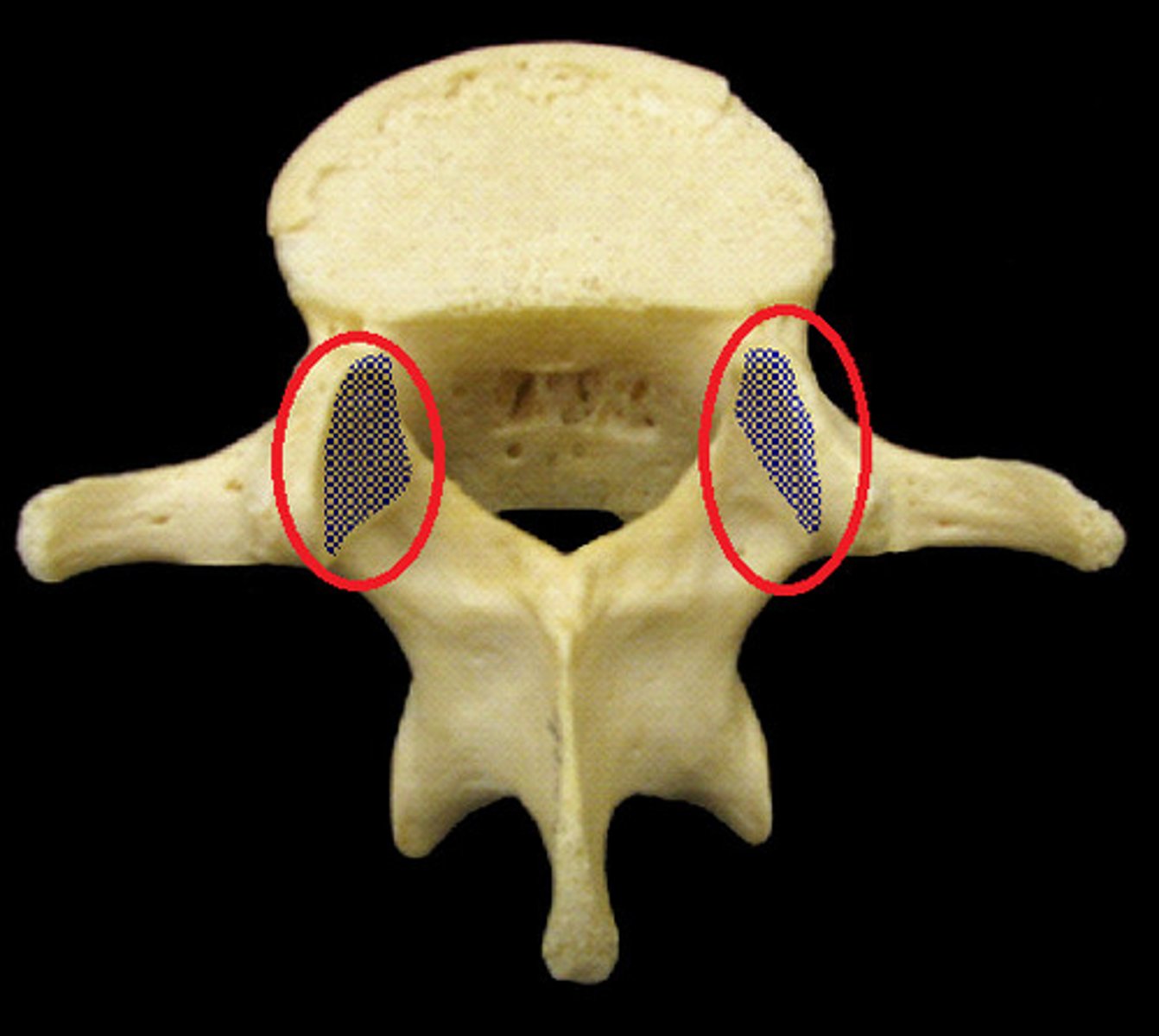Axial Skeleton - Osteology & Arthrology
1/155
There's no tags or description
Looks like no tags are added yet.
Name | Mastery | Learn | Test | Matching | Spaced |
|---|
No study sessions yet.
156 Terms
Normal curvature: cervical spine
30-35 lordosis

Normal curvature: thoracic spine
40 kyphosis
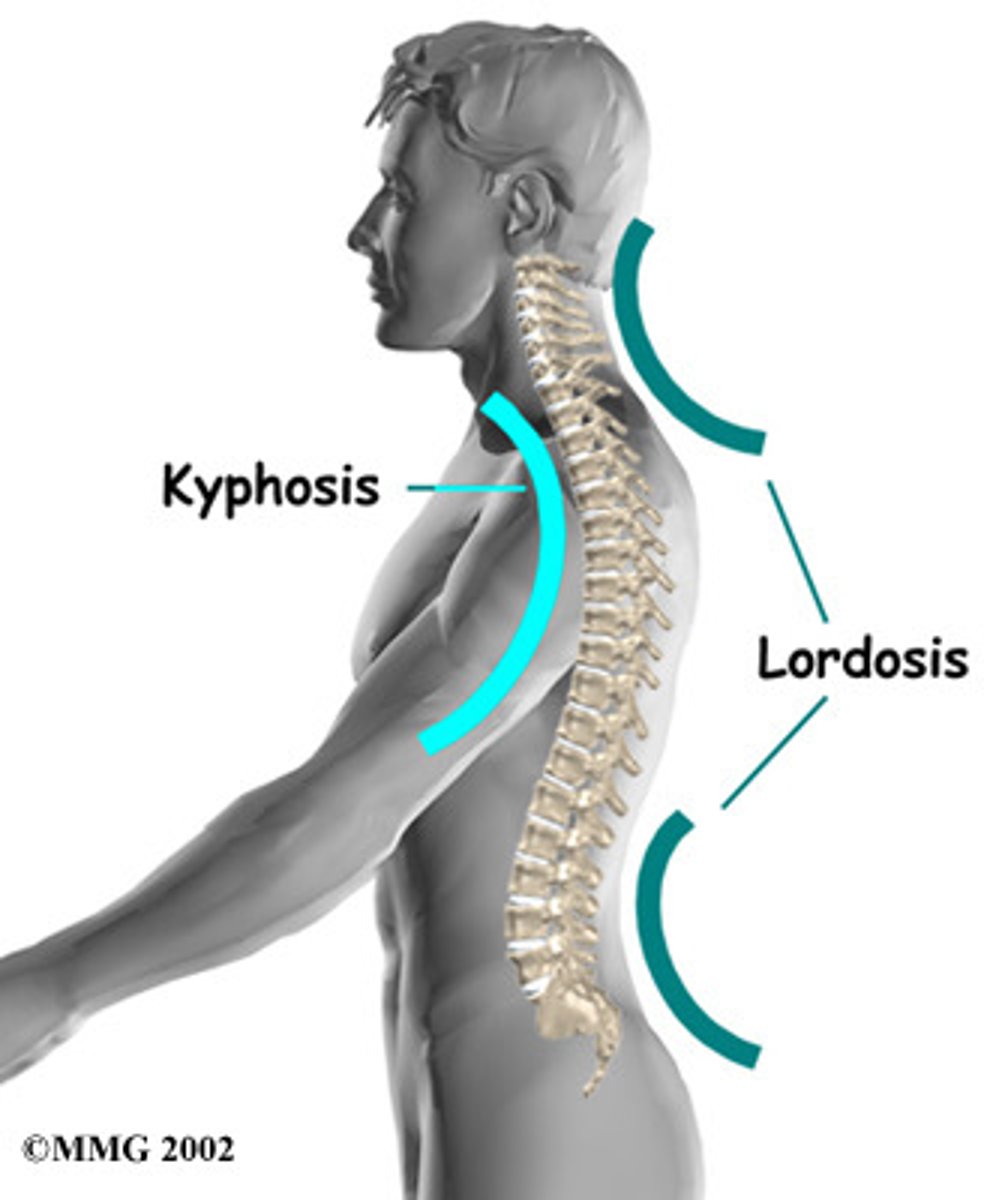
Normal curvature: lumbar spine
45 lordosis
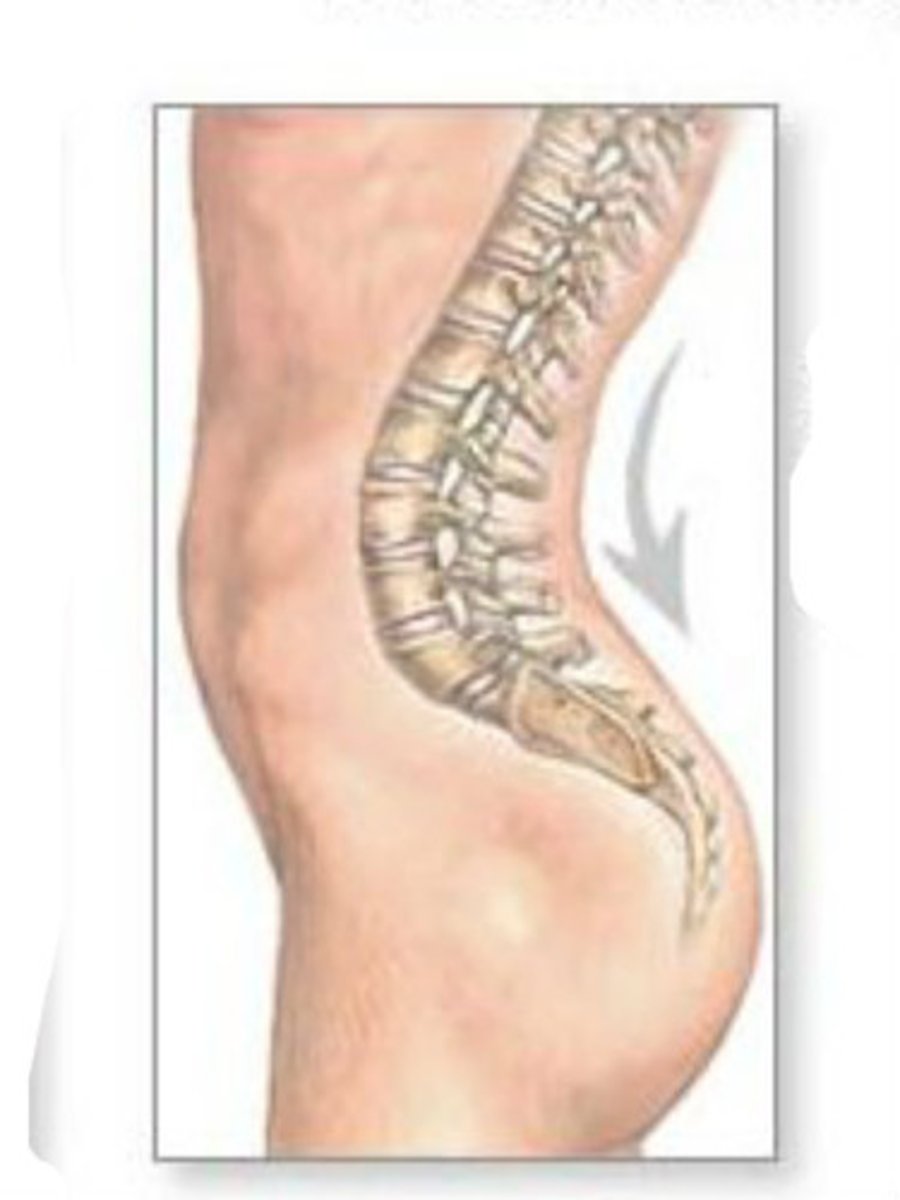
Normal curvature: sacrococcygeal
Kyphosis
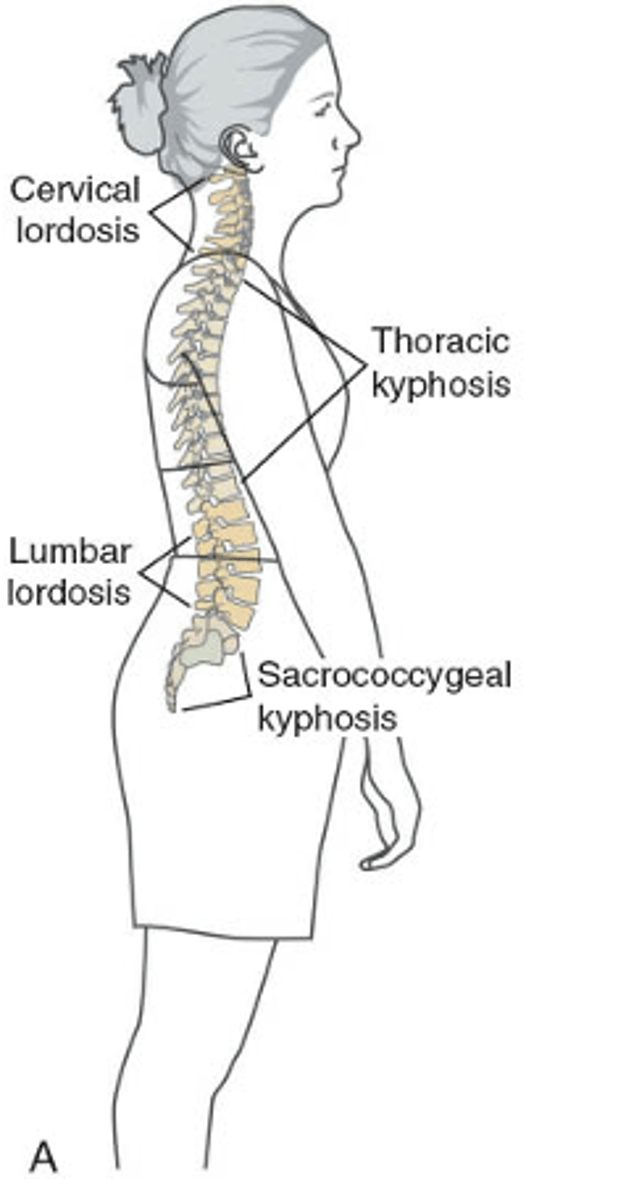
What is the function of normal, dynamic curvatures of the vertebral column?
Provide strength and resilience
Full extension _______ (increases/decreases) cervical and lumbar lordosis but ____________ (increases/decreases) thoracic kypohosis
Increases, decreases (reduces)
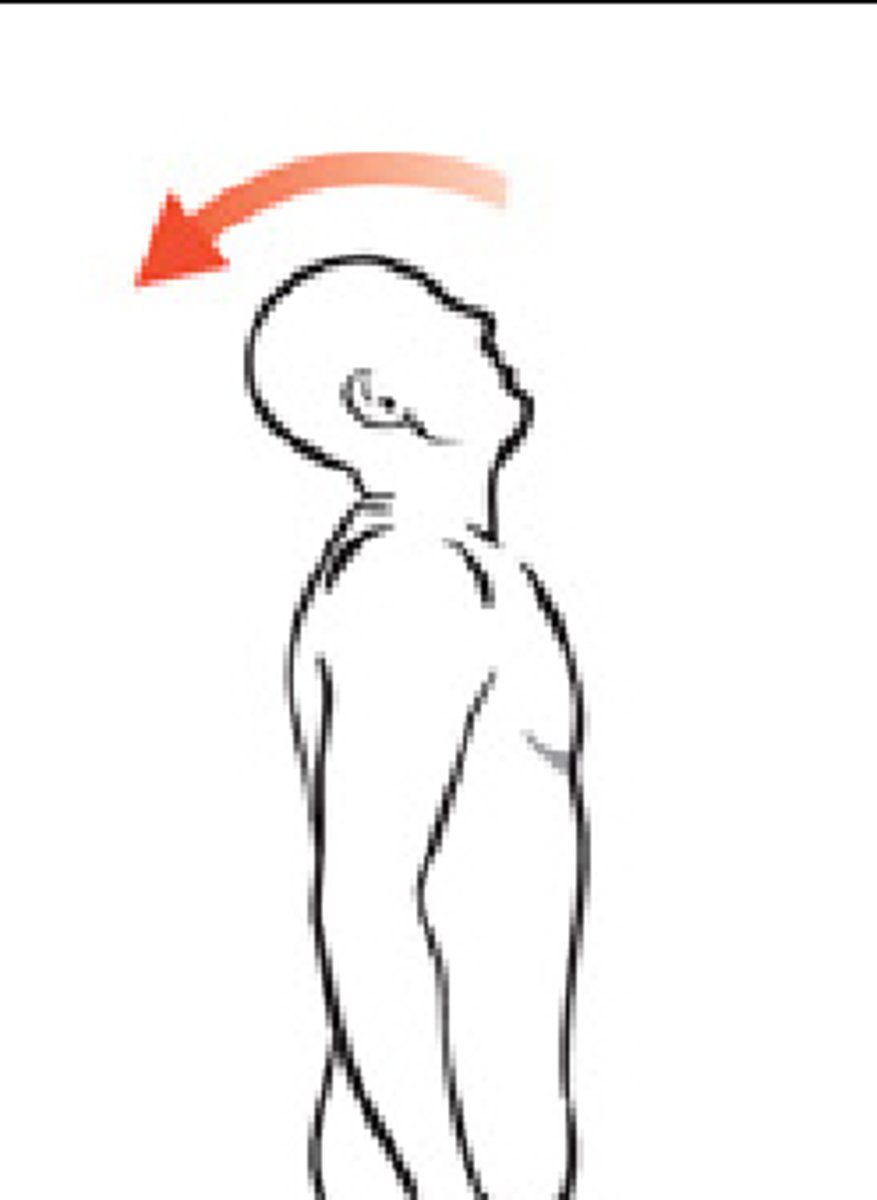
Flexion ________ (increases/decreases) cervical and lumbar lordosis but __________ (increases/decreases) thoracic kyphosis
Decreases, increases
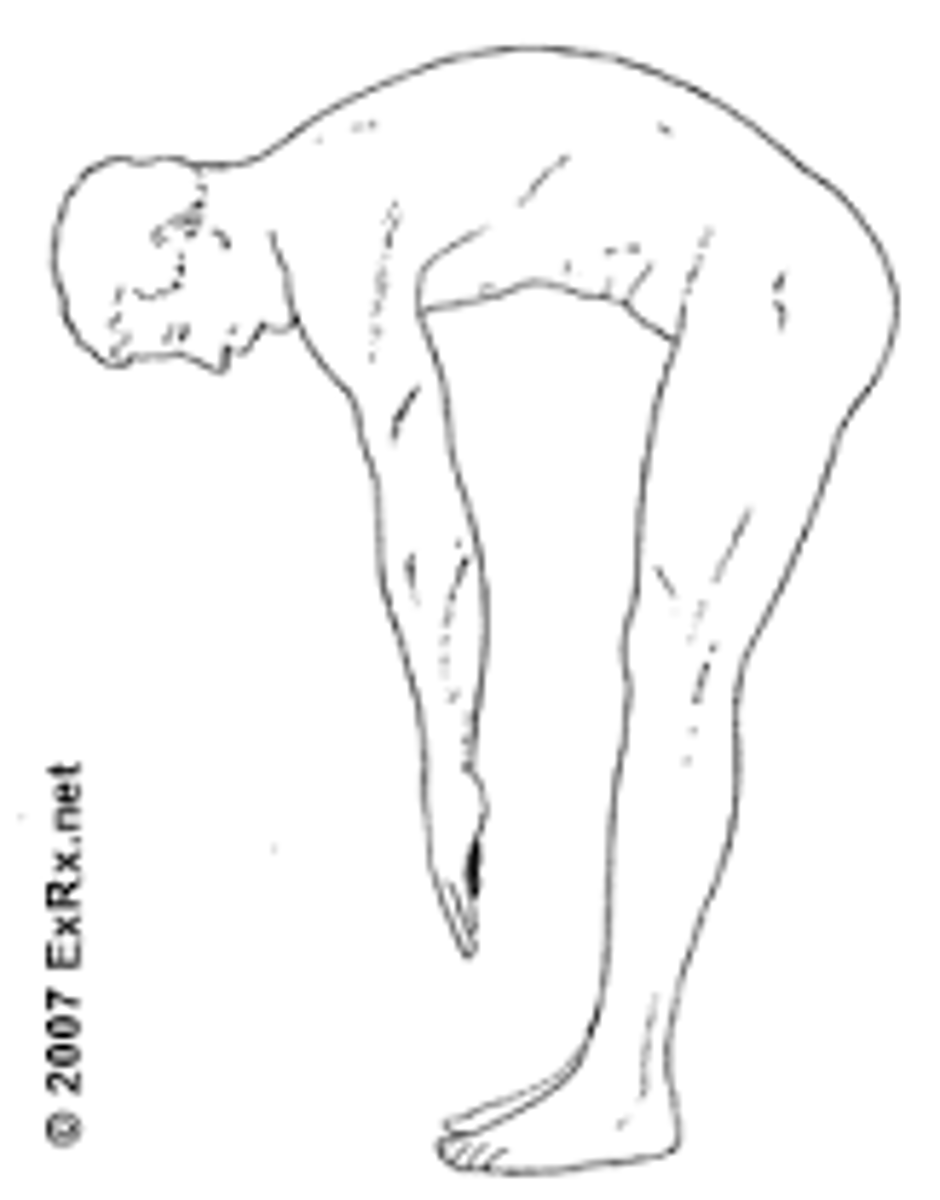
An "ideal" line of gravity passes where in relation to: mastoid process of temporal bone
Through
An "ideal" line of gravity passes where in relation to: S2 vertebra
Just anterior
An "ideal" line of gravity passes where in relation to: hip joints
Just posterior
An "ideal" line of gravity passes where in relation to: knee and ankle
Anterior
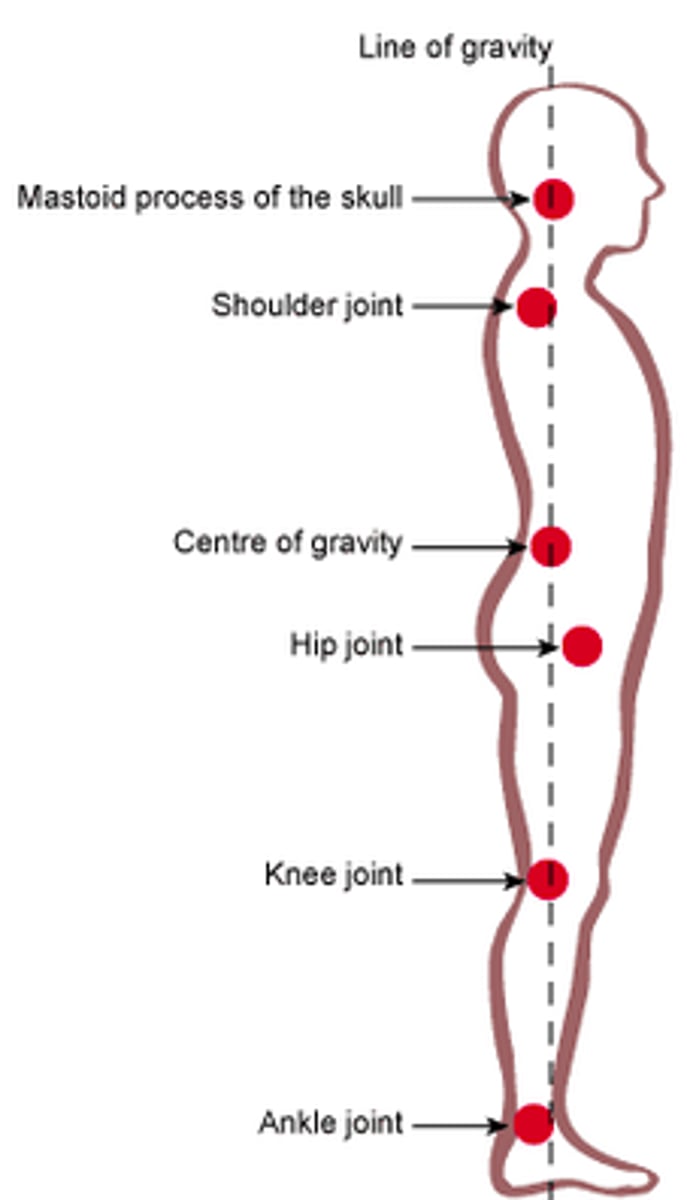
An "ideal" line of gravity passes where in relation to: apex of each curvature
Just to concave side of apex
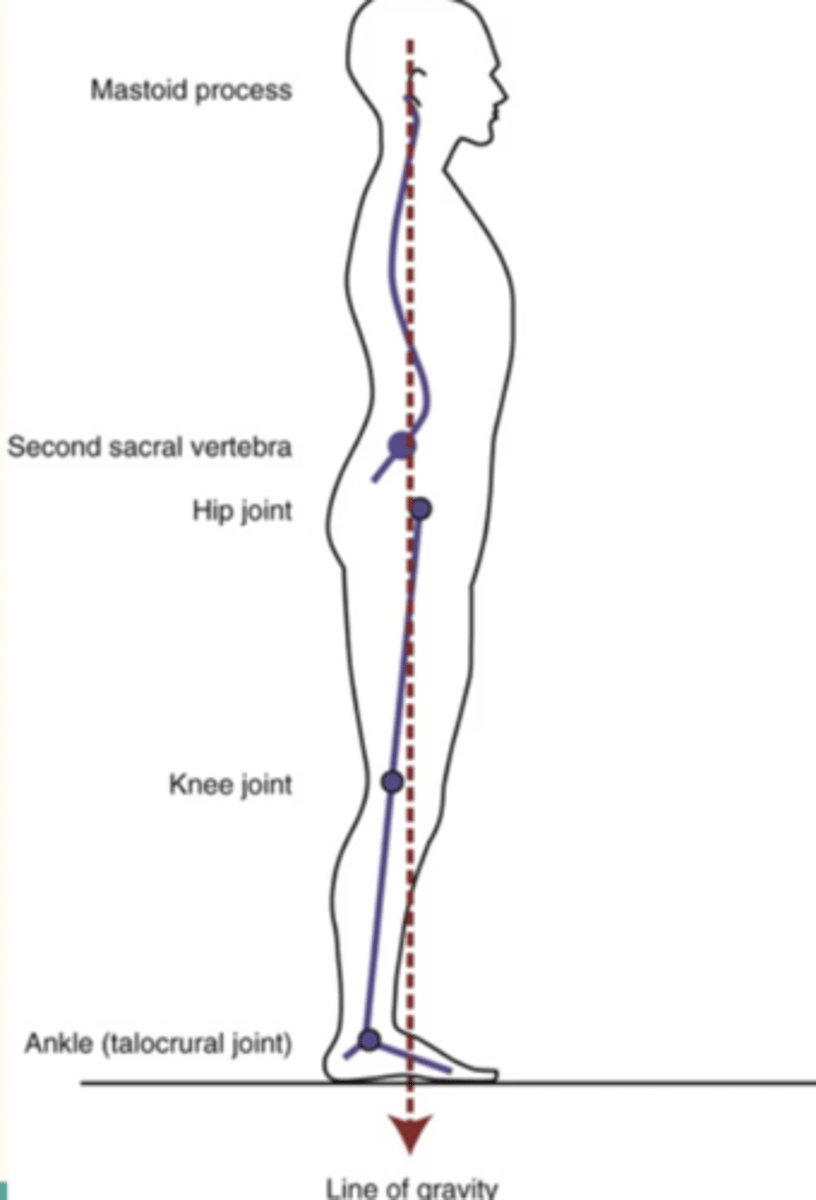
In relation to the force of gravity, what is another benefit of our spinal curvatures?
Force of gravity produces torques in alternating flexion and extension directions --> minimizing total net external torque
Which 4 factors determine the shape of spinal curves?
1. IV discs & bodies
2. Orientation of facet joints
3. Composition of ligaments
4. Degree of natural muscle stiffness
When severe, abnormal vertebral curvatures _________ (increase/decrease) stress on muscles, ligs, bones, IV discs, apophyseal joints, spinal nerve roots, & ability to expand diaphragm
Increase
_________: normal curvatures w/ ant pelvic tilt
"Ideal" posture
_________: exaggerated thoracic kyphosis and lumbar lordosis
"Swayback"

_________: reduced curvatures
"Flat back"

_________: increased thoracic kyphosis and reduced lumbar lordosis
"Rounded back"
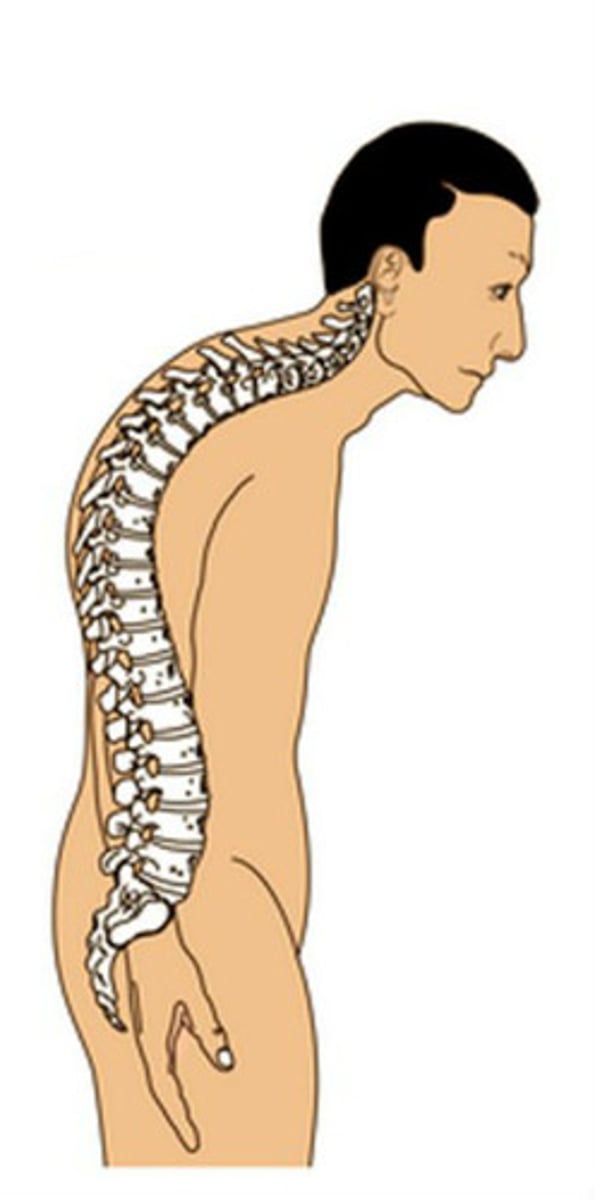
Ligamentum flavum limits _________
Flexion
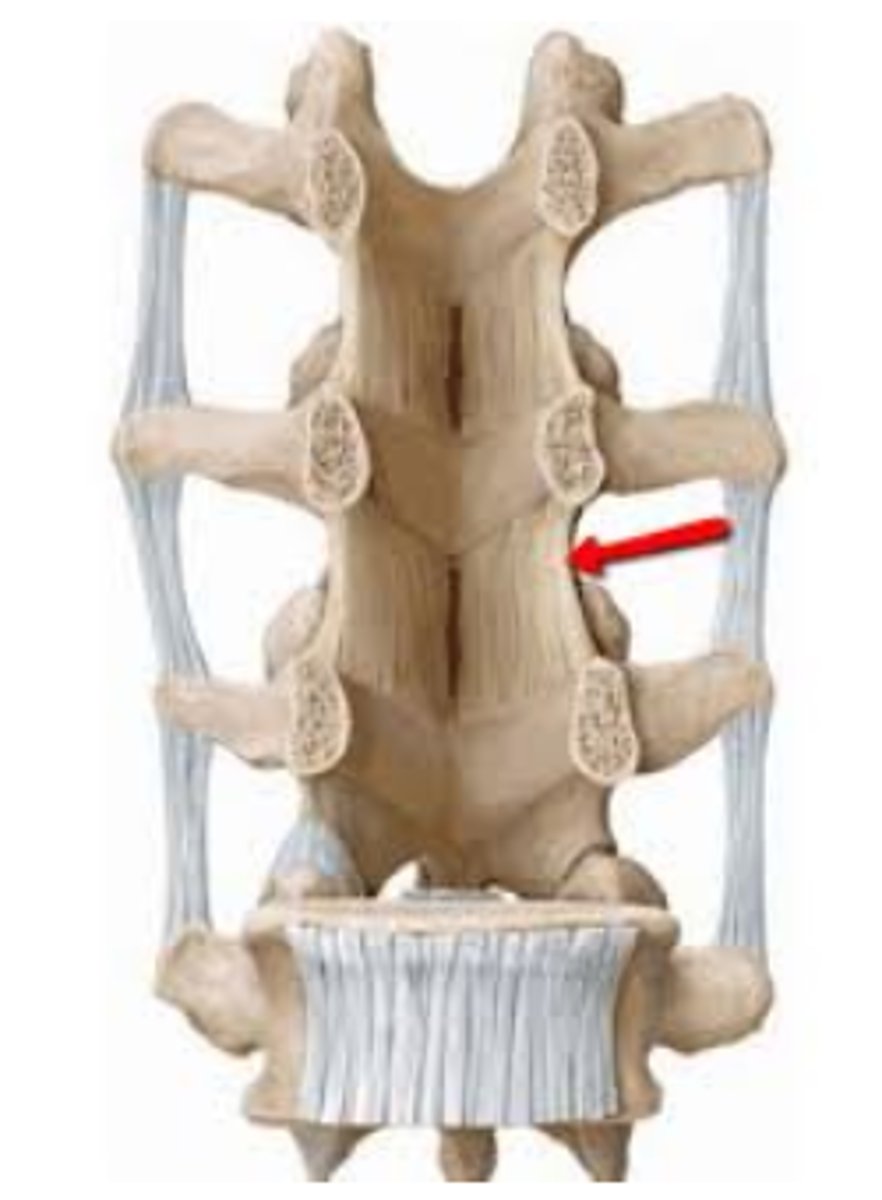
Supraspinous and interspinous ligaments limit _______
Flexion
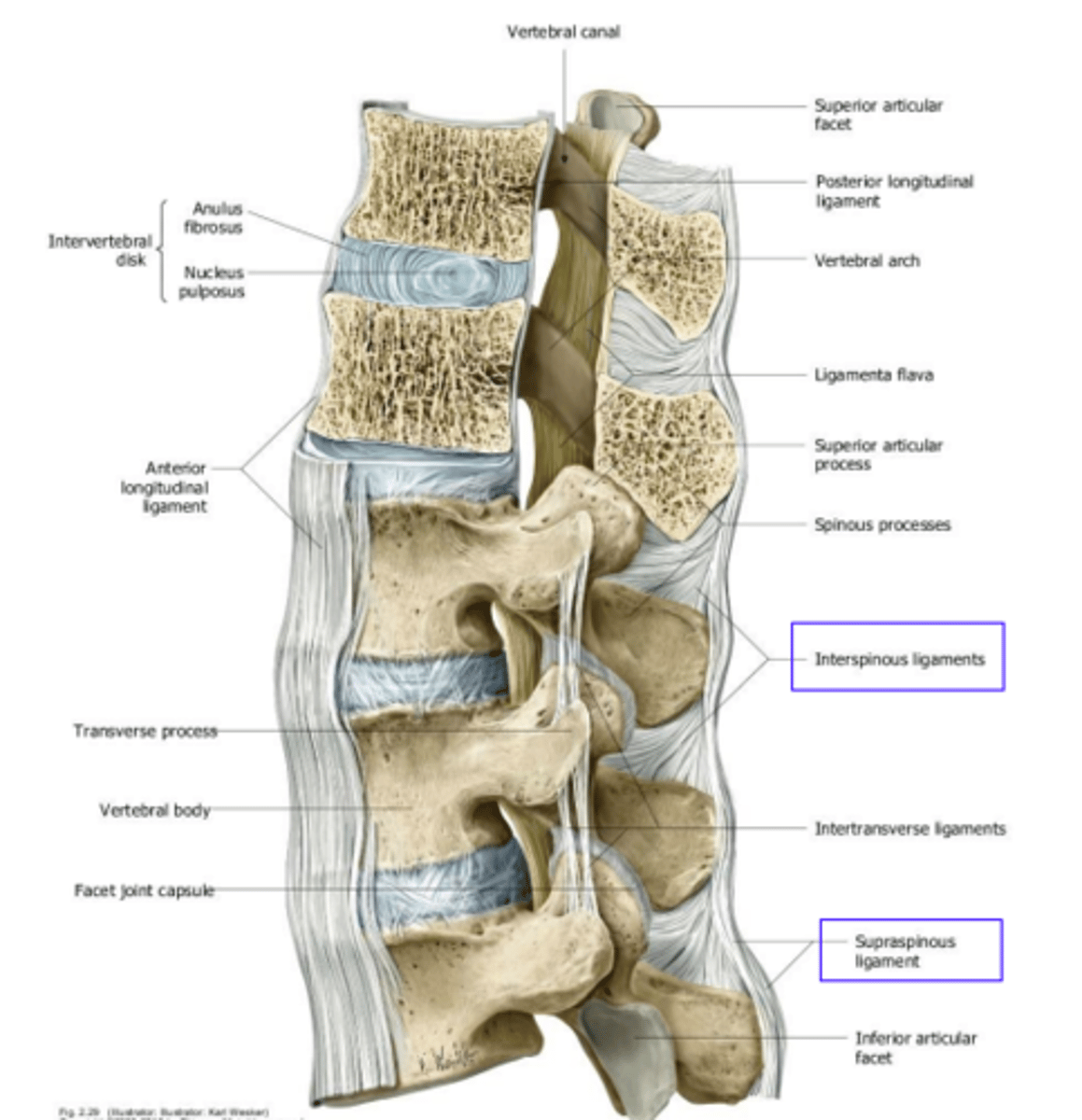
Intertransverse ligaments limit ________
Contralateral lateral flexion & flexion
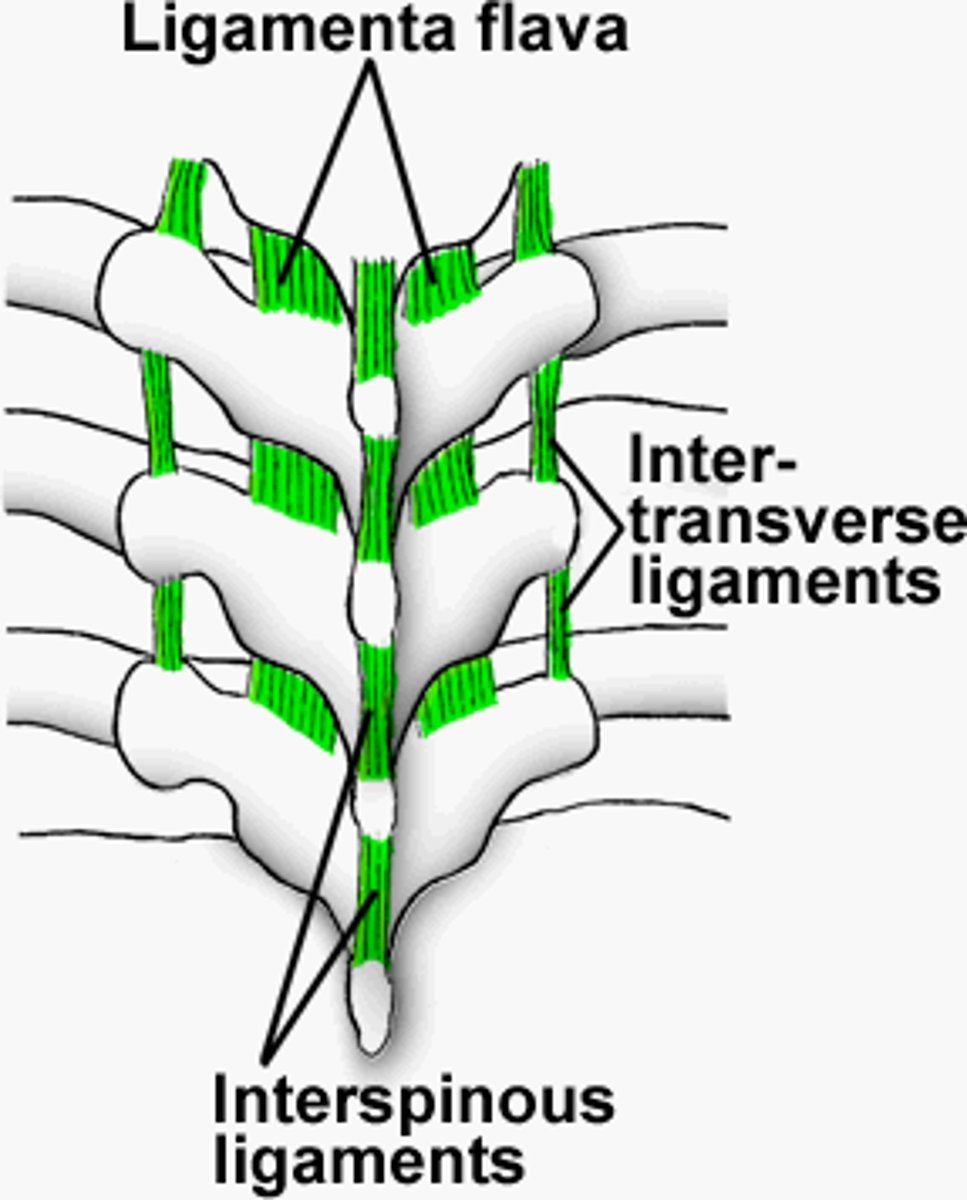
Posterior longitudinal ligament limits _________ and reinforces _________
Flexion, posterior disc

Anterior longitudinal ligament limits _________
Extension, excessive lordosis
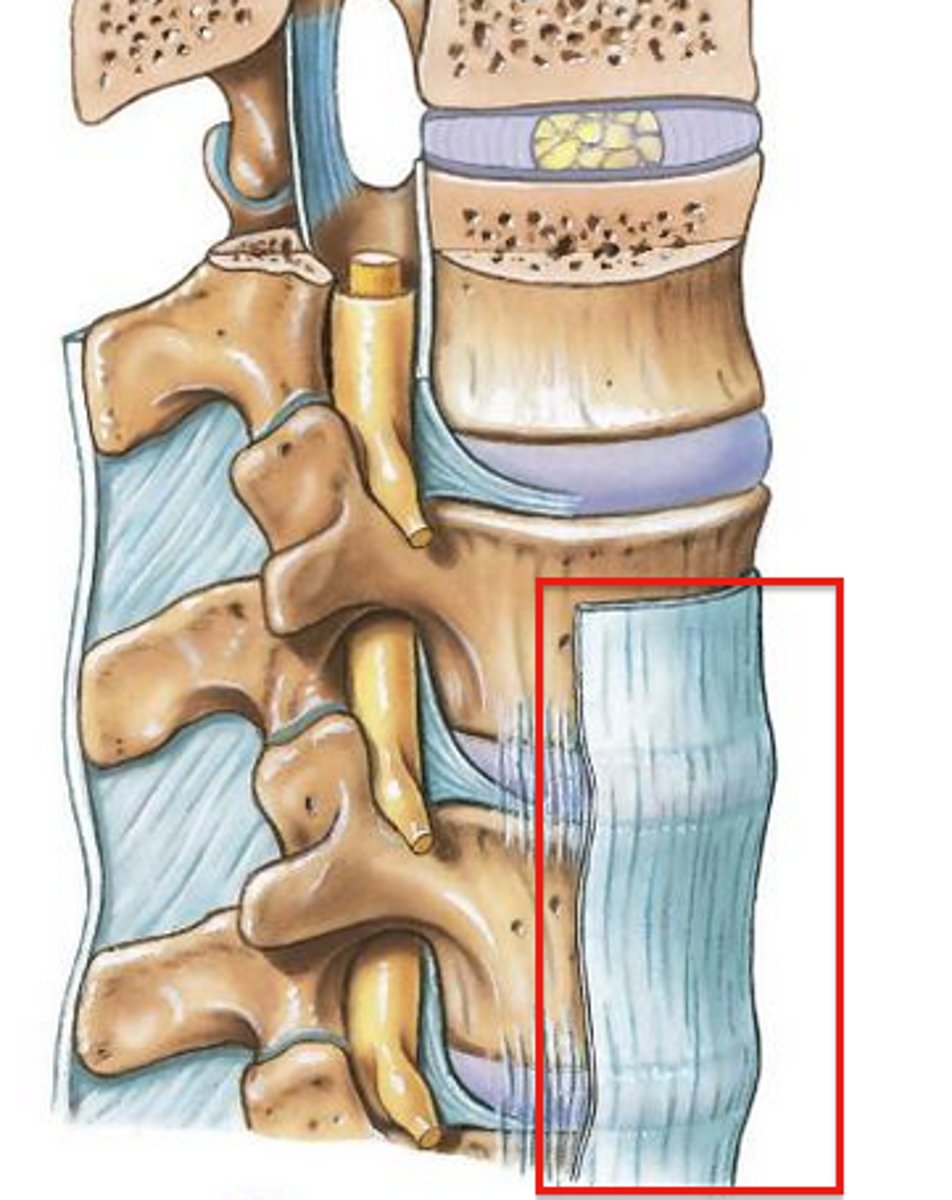
Apophyseal joint capsules strengthen __________
Apophyseal joints
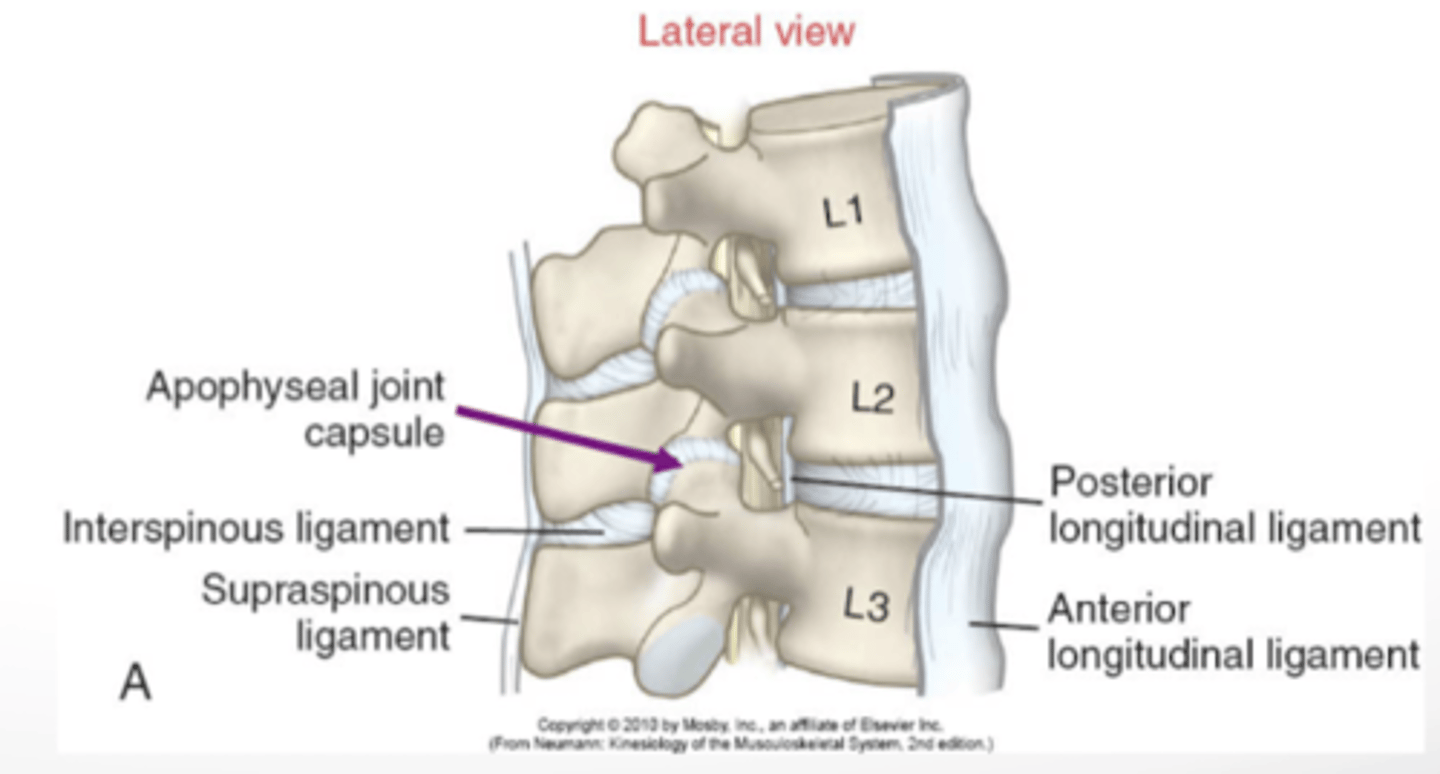
True or false: ligamentum flavum is highly elastic
True!! (80% elastin)
B/w neutral and full flexion, the ligamentum flavum elongates an additional __________%
35% (in total, this places the ligament on 50% strain)
True or false: the ligamentum flavum provides constant & moderate resistance to flexion throughout the range
True!! (in fact, it is already strained 15% at neutral)
What are the 3 functional components of a typical IV junction?
1. TPs & SPs
2. Apophyseal joints
3. Interbody joints
________: function as mechanical levers that increase leverage of muscles and ligaments
TPs & SPs
________: guide intervertebral motion
Apophyseal joints
_________: absorb and distribute loads, allow one vertebral body to "rock" on another; approximate axis of rotation
Interbody joint
80% of load goes through which structure in the spine?
Interbody joint
__________: central get w/ high water content to absorb shock and transfer loads
Nucleus pulposus
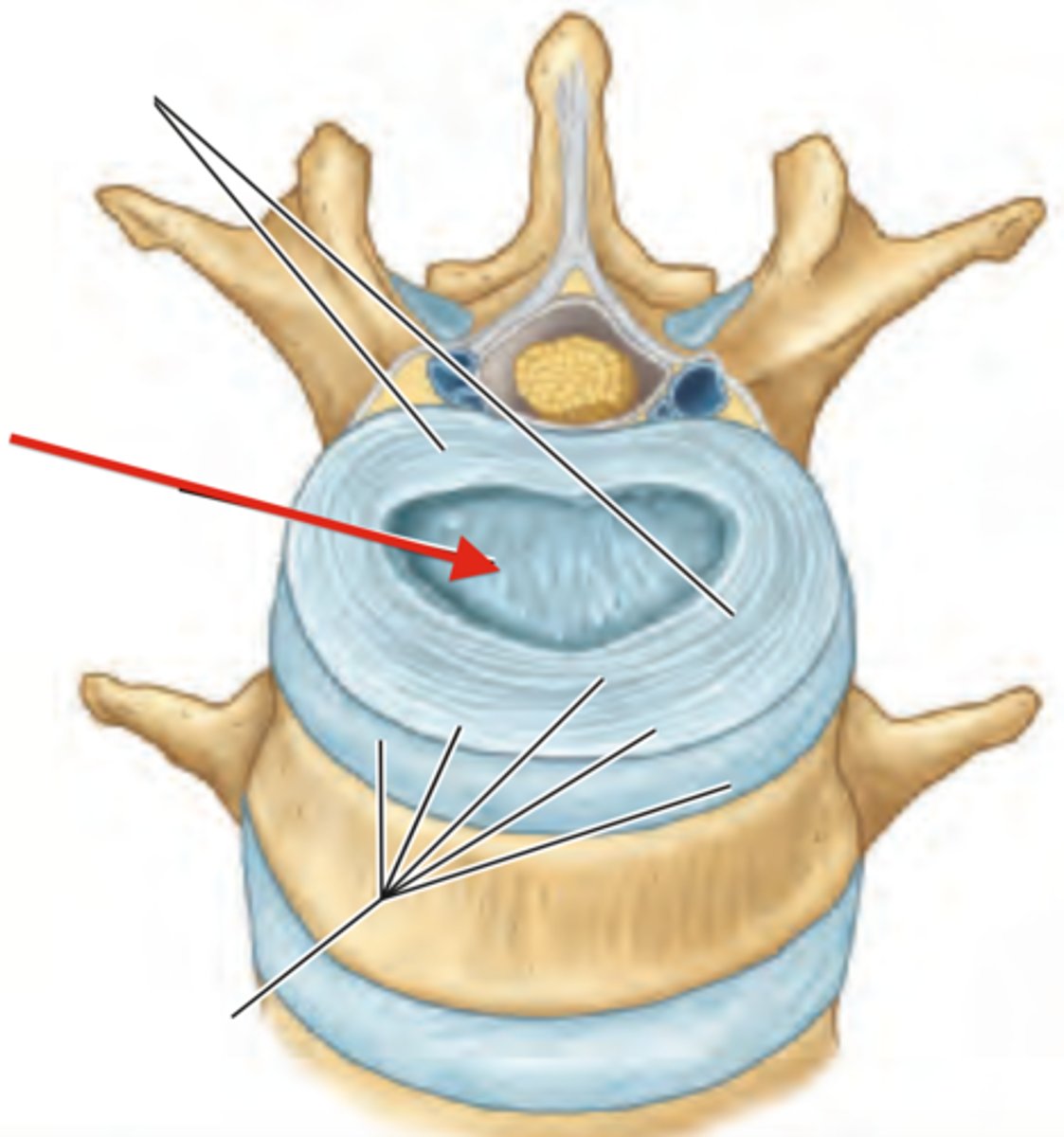
_______: rings of collagen fibers providing strength and flexibility
Annulus fibrosus
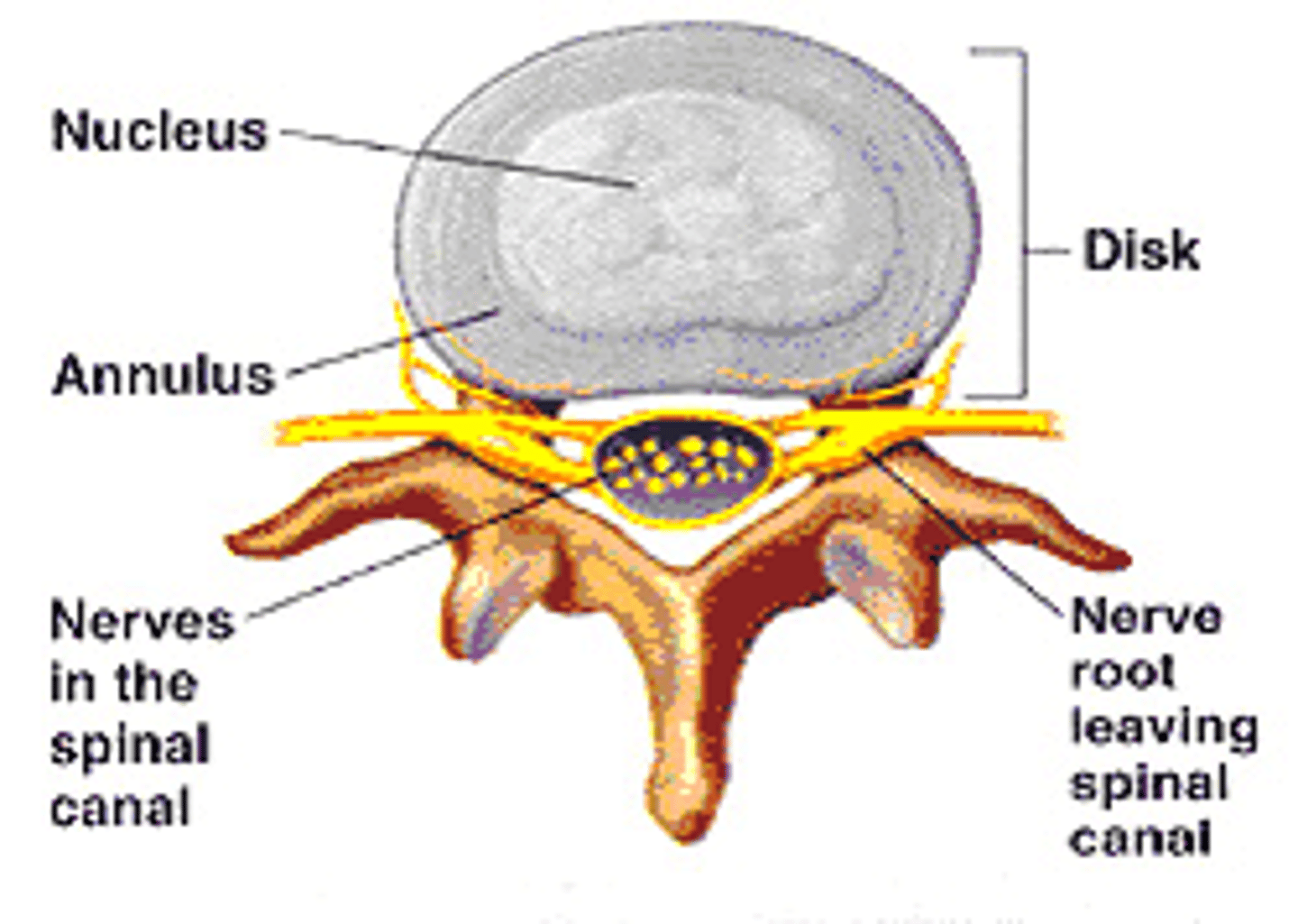
________: thin cartilaginous caps covering vertebral body made of fibrocartilage (facing disc) and calcified cartilage (facing bone)
Vertebral end plate
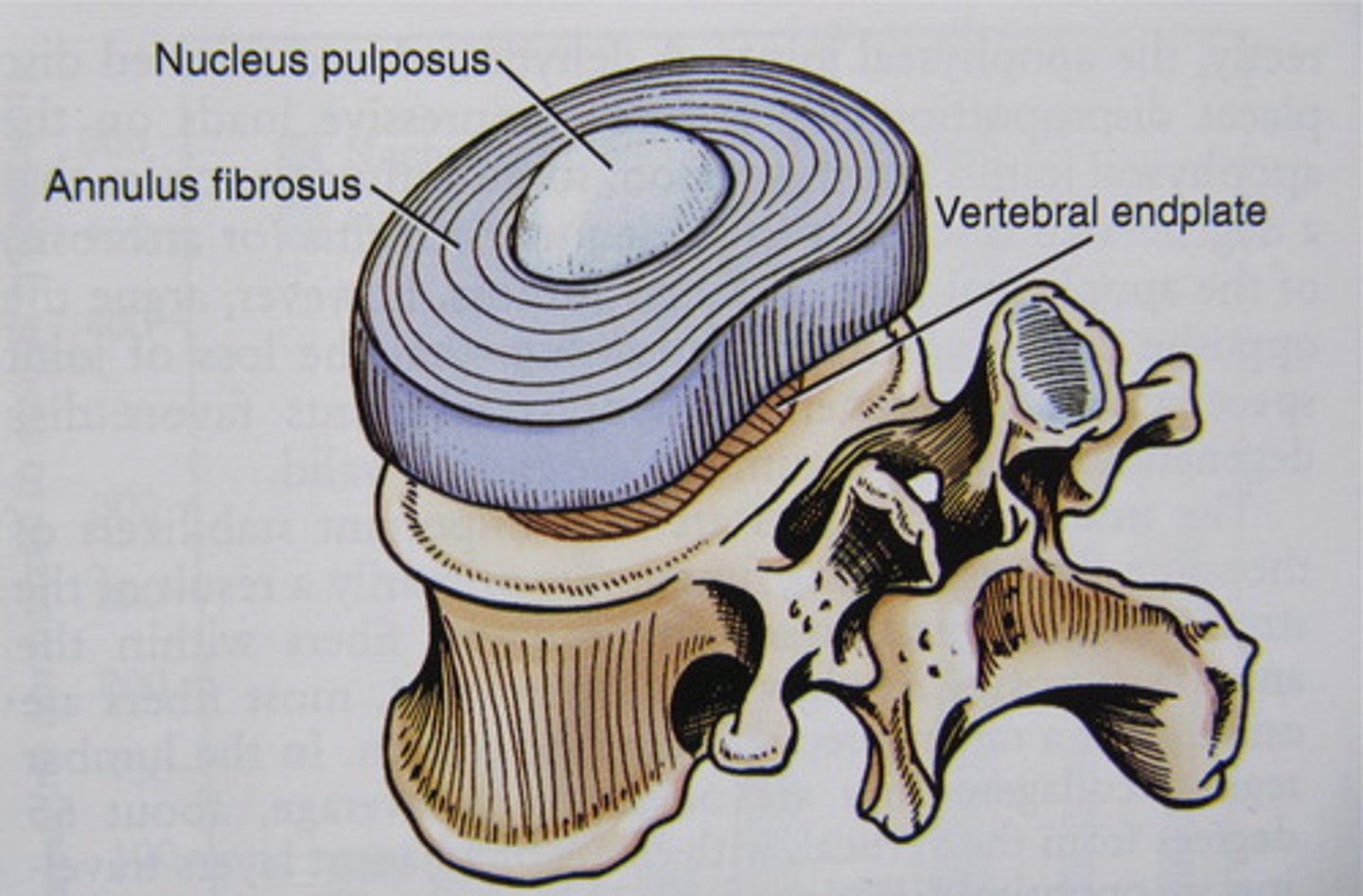
How does the IV disc receive nutrients?
Diffusion via endplates
NOTE: as we age, increased calcification limits nutrients & O2 which compromises discs ability to absorb loads
Why are the collagen fibers of the annulus fibrosus angled at 65 from vertical (otherwise known as 25 from horizontal)?
Permits tensile forces in 4/6 movements that we do
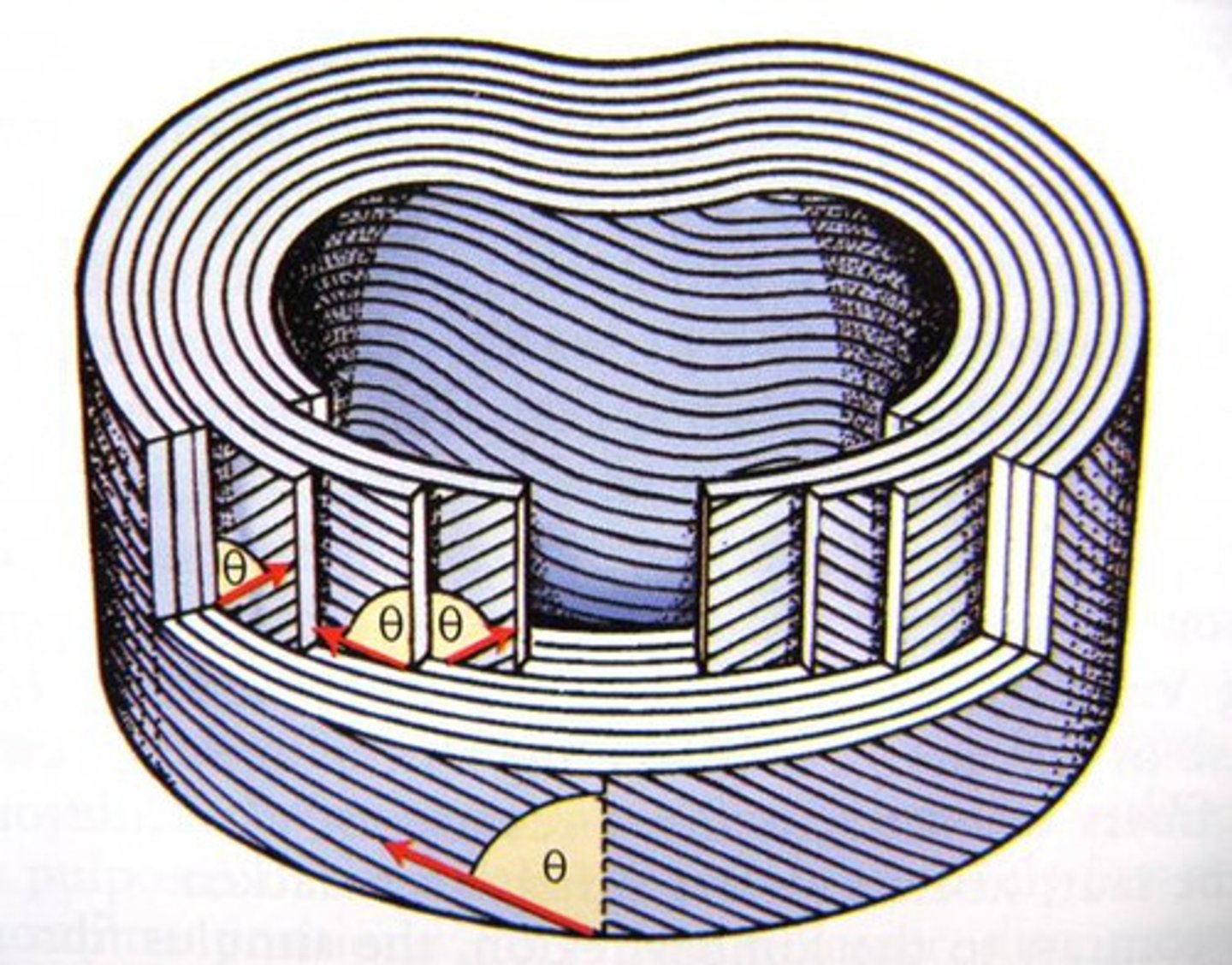
What is the downside of the collagen fibers of the annulus fibrosus only being 25 from the horizontal?
More susceptible to torsional forces
Briefly explain how the IV discs distribute pressure.
Compression force from BW & muscle contraction raises hydrostatic pressure in nucleus pulposus --> elevates tension in annulus fibrosis to inhibit expansion --> pressure evenly redistributed to several tissues
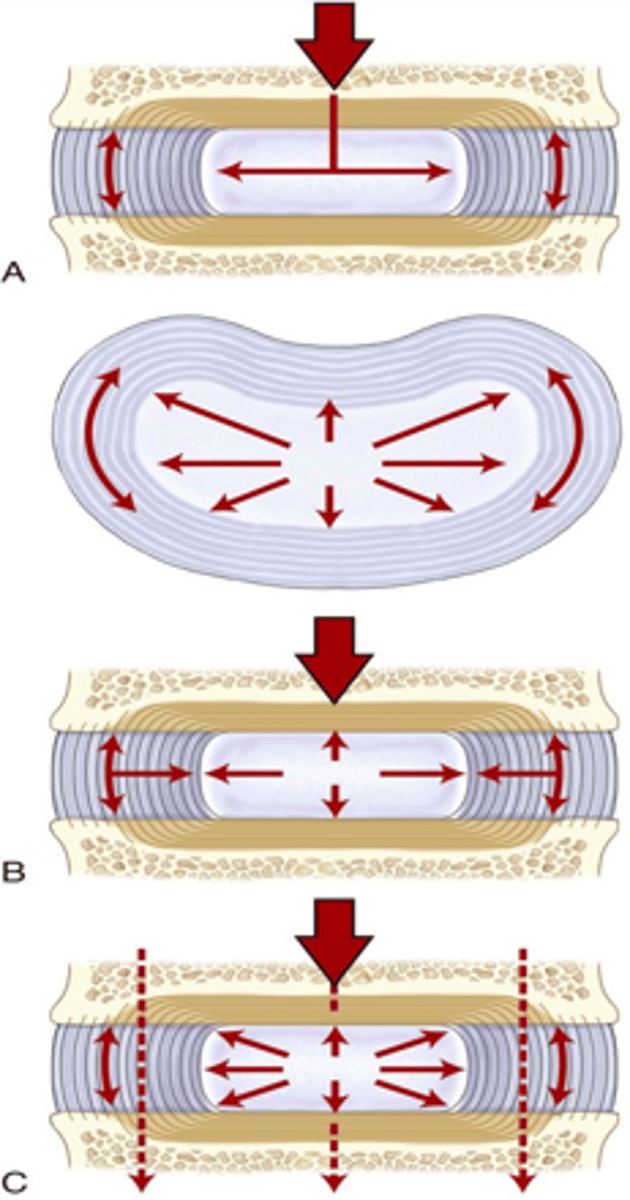
Which structure prevents migration of the disc material?
Posterior annulus
If a disc has a weak, cracked or distend posterior annulus, what pathology may occur?
Herniated nucleus pulposus
True or false: disc protrusions or bulges are common in asymptomatic individuals -- extrusions are not
TRUE
What is the difference b/w a protrusion and extrusion?
The main difference between a protrusion and an extrusion is that the nucleus has broken out of the wall of the annulus with an extrusion. A protrusion can lead to an extrusion if the nucleus pushes hard enough and the annulus wall gives out.
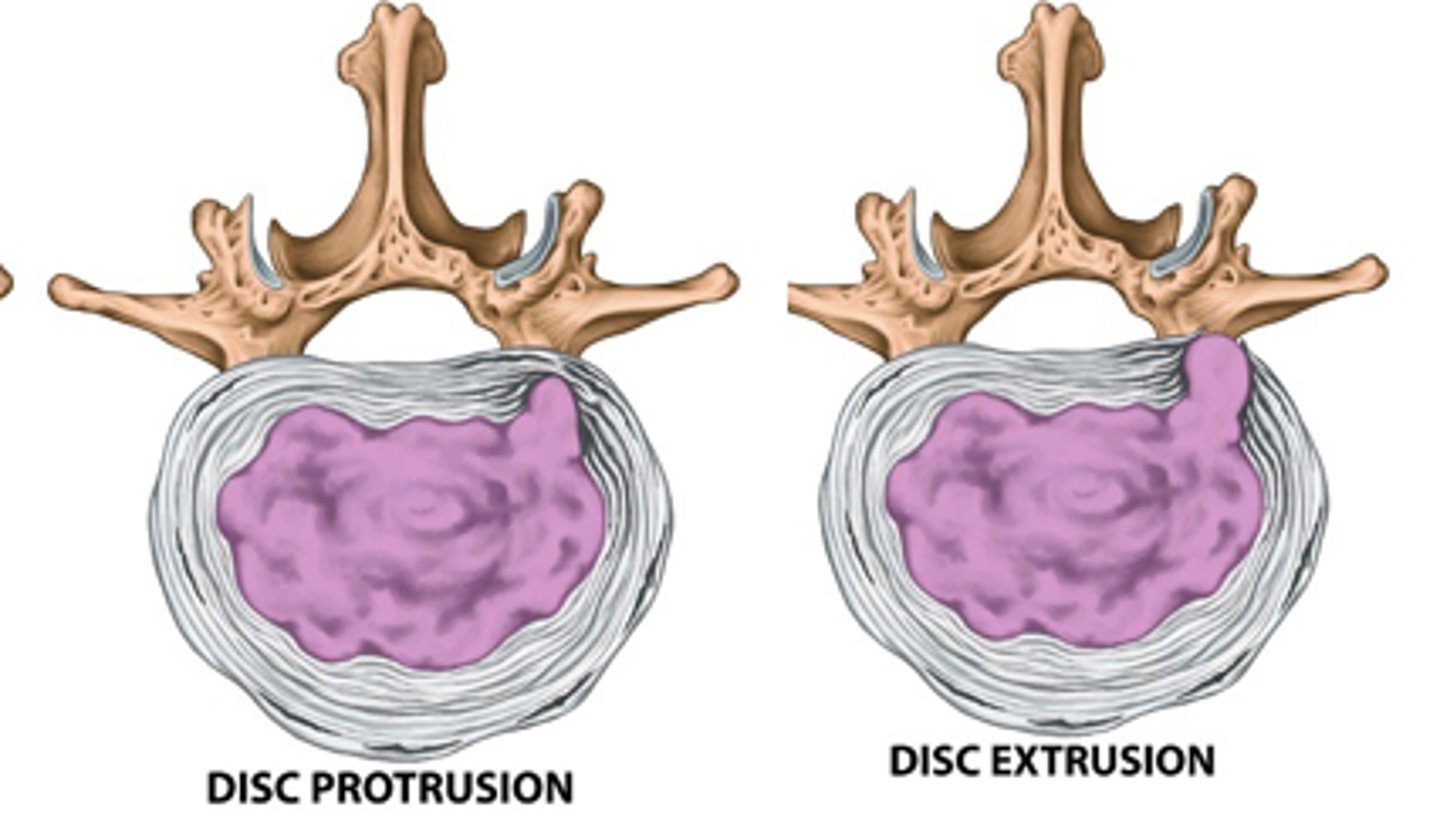
If nuclear material impinges on spinal cord or nerve roots, what symptoms might a patient present with?
Pain, altered sensation, muscle weakness and reduced reflexes based on motor & sensory distribution of impinged nerve roots
Sustained lumbar _______ (extension/flexion) reduces pressure in the disc (thereby allowing water to swell the disc)
Extension
What time of day are we tallest? Why?
Waking -- due to the water-retaining capacity of the discs while we sleep
Which position causes the highest disc pressure? Why?
Lifting 20 kg, bent over w/ round back -- flexion (especially with loads) puts higher load on disc
Movement throughout the vertebral column is described as ______________: direction of movement on ________ side of ________ vertebral segment
Cranial-to-caudal, anterior, superior
Type: apophyseal joints
Plane
Apophyseal joints are near _________ in lower thoracic, lumbar and lumbosacral regions to block excessive translation to maintain space for spinal cord and spinal nerve roots
Vertical
__________ facets favor axial rotation
Horizontal
___________ facets block axial rotation
Vertical
_________: articular facet surface moves closer to its partner facet, usually caused by a compressive force
Approximation
__________: articular facet surface moves away from its partner facet, usually caused by a distraction force
Separation (gapping)
________: articular facet translates in linear or curvilinear direction relative to another, caused by a force directed tangential to the joint surface
Sliding (gliding)
Superior articular facet position: cervical
Posterior & superior
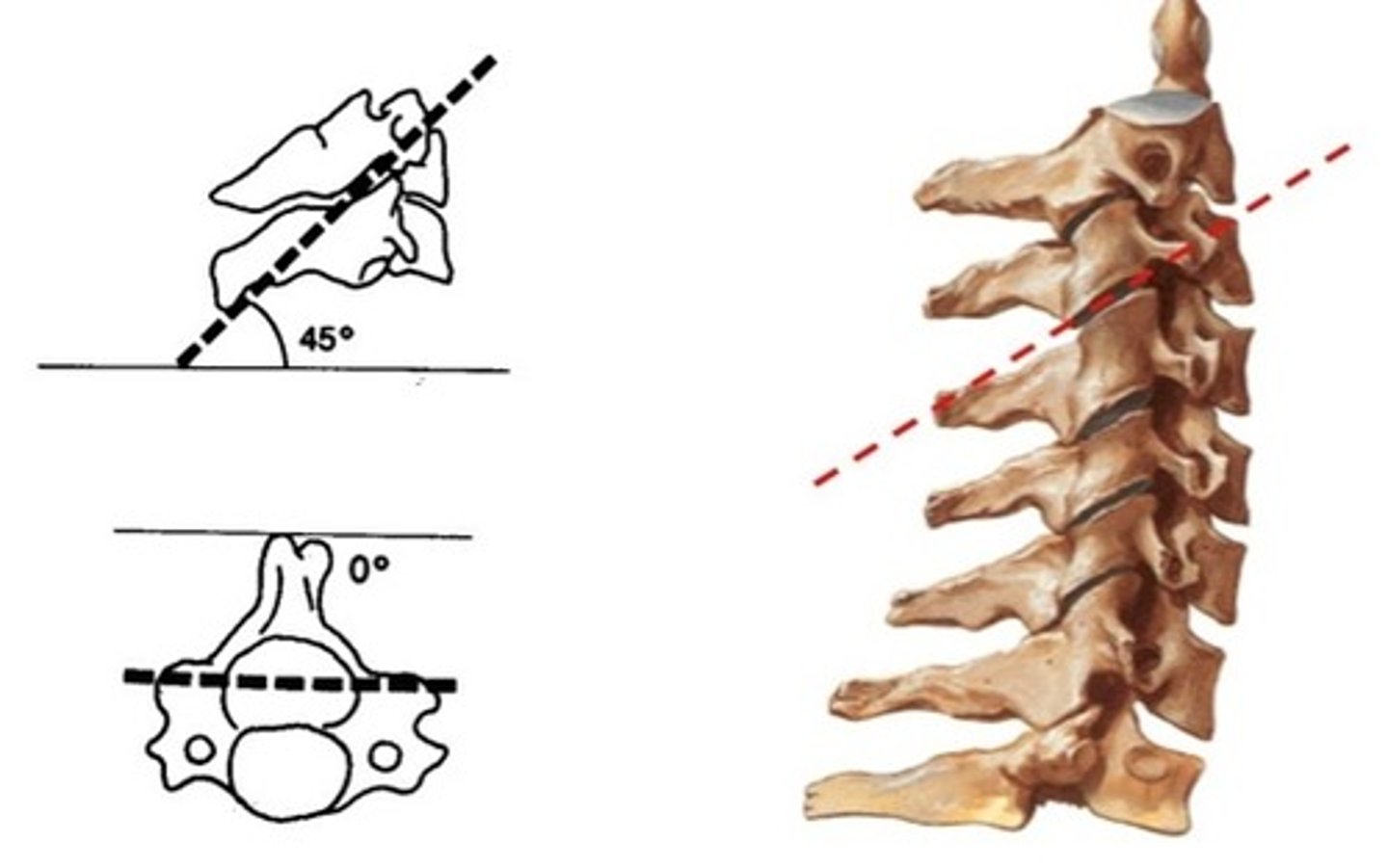
Superior articular facet position: thoracic
Mostly posterior
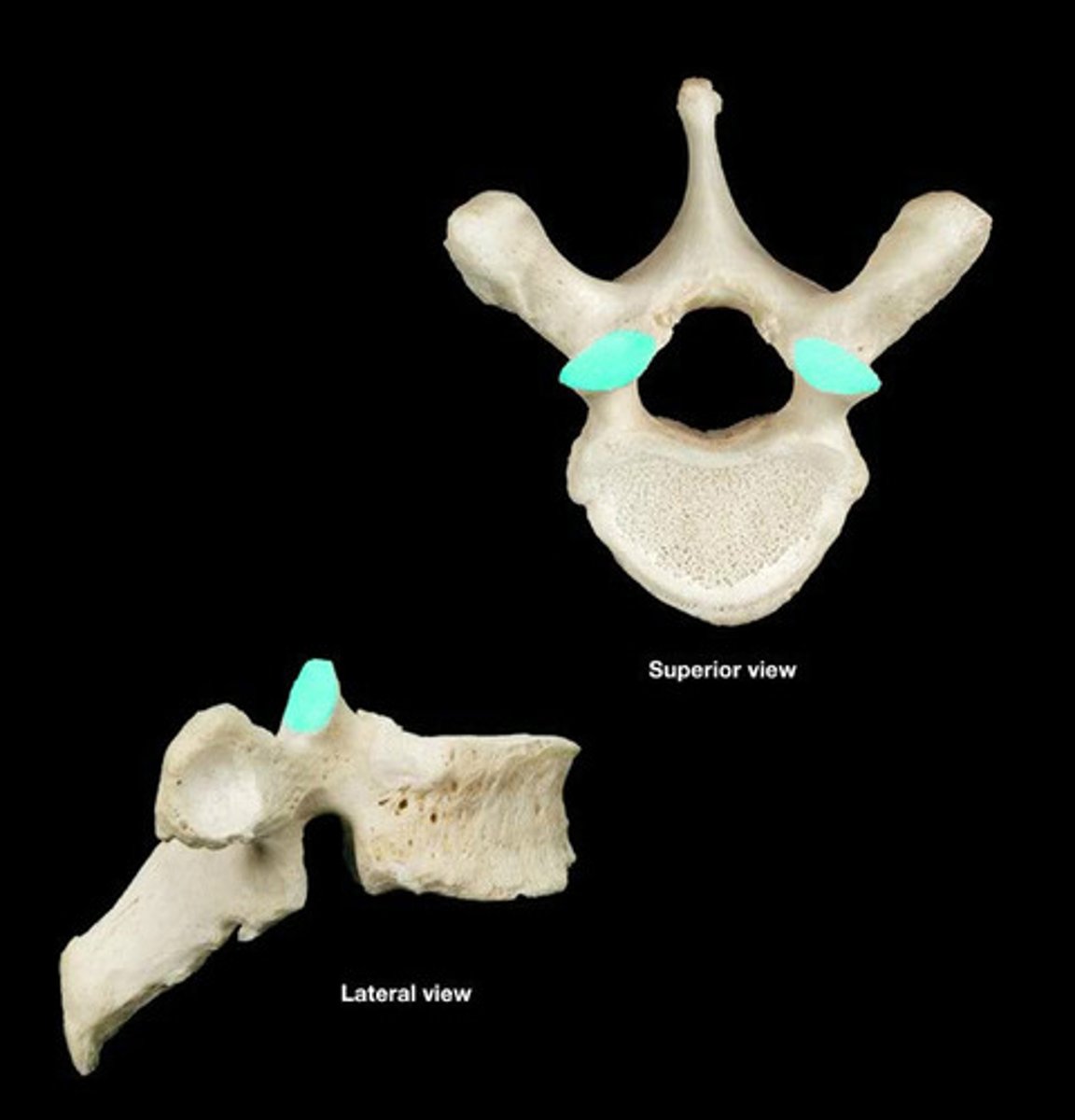
Superior articular facet position: lumbar
Medial to posterior-medial
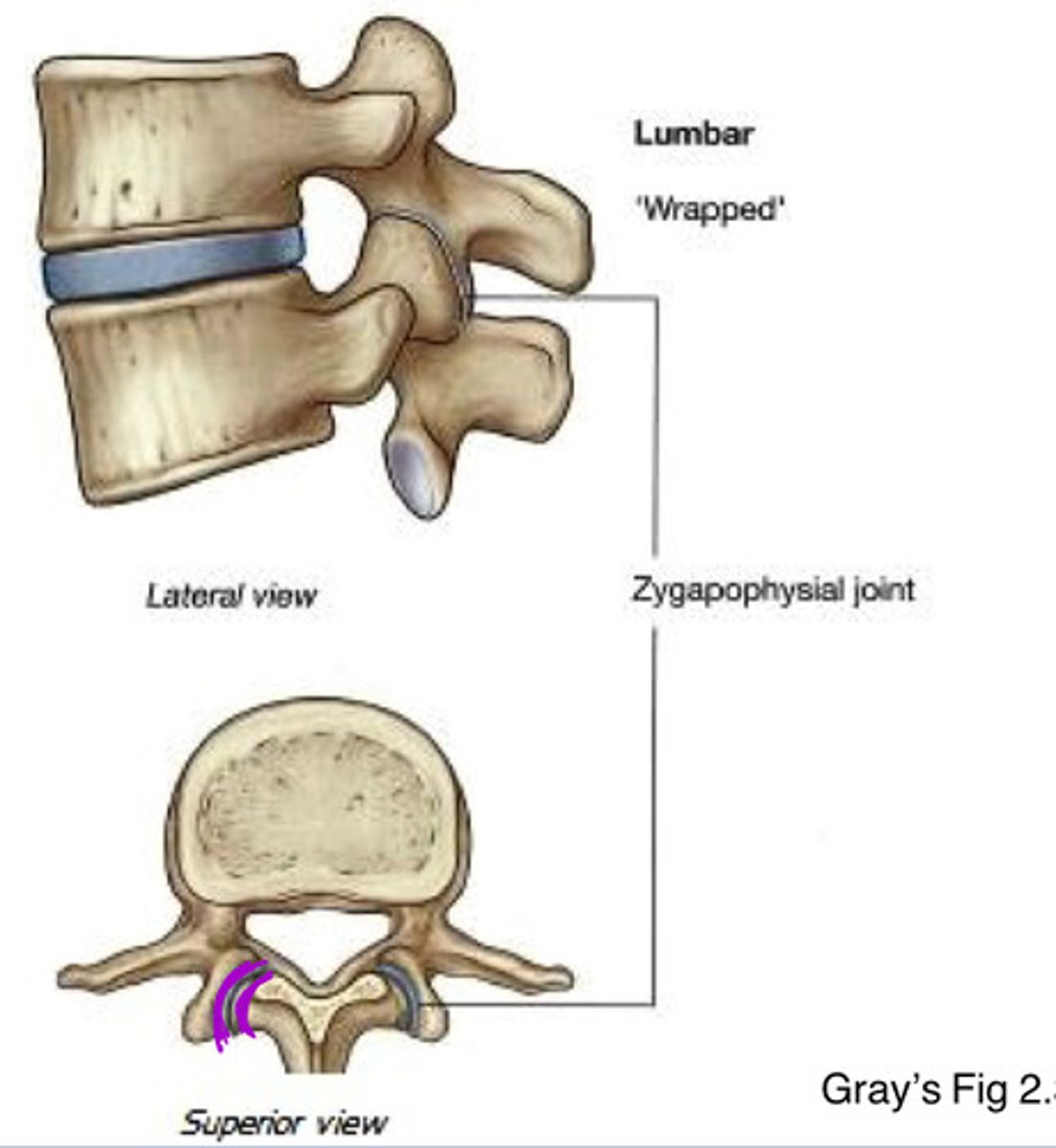
AO joint: articulation
Convex condyles of occipital bone on concave superior articular facets of the atlas
AO joint: DOF
2 -- flexion/extension, slight lateral flexion
Which motion does the AO joint NOT have?
Rotation
AO joint: ligamentous stability
Alar ligament from dens --> occipital condyle (limits axial rotation)
AA joint: articulation(s)
Median: dens of axis through osseous ligamentous ring of anterior arch of atlas and transverse ligament
2 apophyseal joints w/ flat orientation
AA joint: DOF
2 -- rotation, limited flexion/extension
Which motion does the AA joint NOT have?
Lateral flexion
Intracervical apophyseal joints (C2-C7): articulation
Facet surfaces oriented like shingles on a 45 degree sloped roof

C2-C7: superior facets face _________ and ___________
Posterior and superior (inferior facets are opp.)
C2-C7: DOF
3 -- flexion/extension, rotation, lateral flexion
Osteokinematics (neck): extension
75-80
Osteokinematics (neck): flexion
45-50
When is the volume of the cervical vertebral canal greatest?
Full flexion (least in full extension)
Arthrokinematics (AO): flexion & extension
Convex occiput rolls POSTERIORLY w/ ANTERIOR slide during extension -- anteriorly w/ posterior slide during flexion
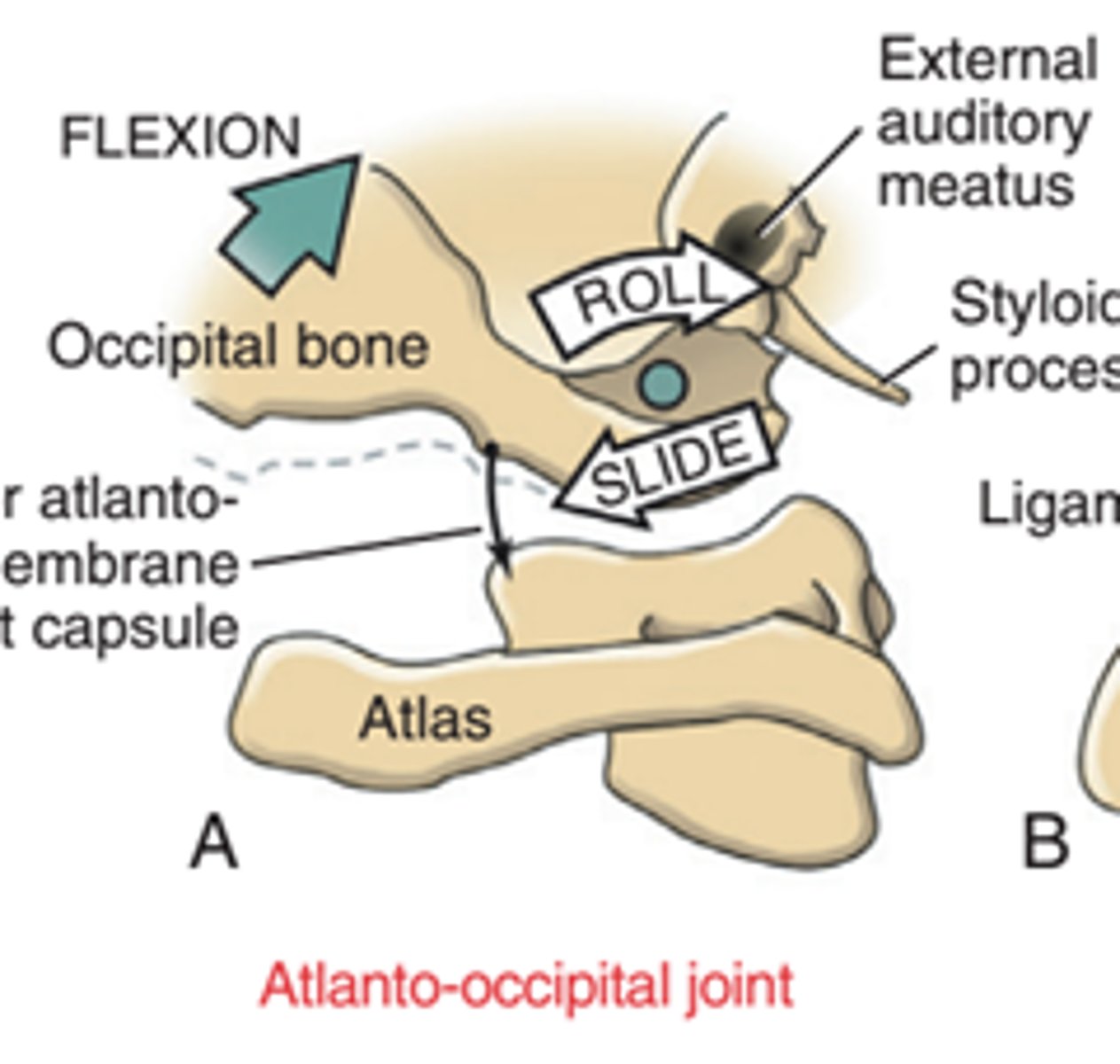
Arthrokinematics (AA): flexion & extension
Tilt for slight flexion/extension
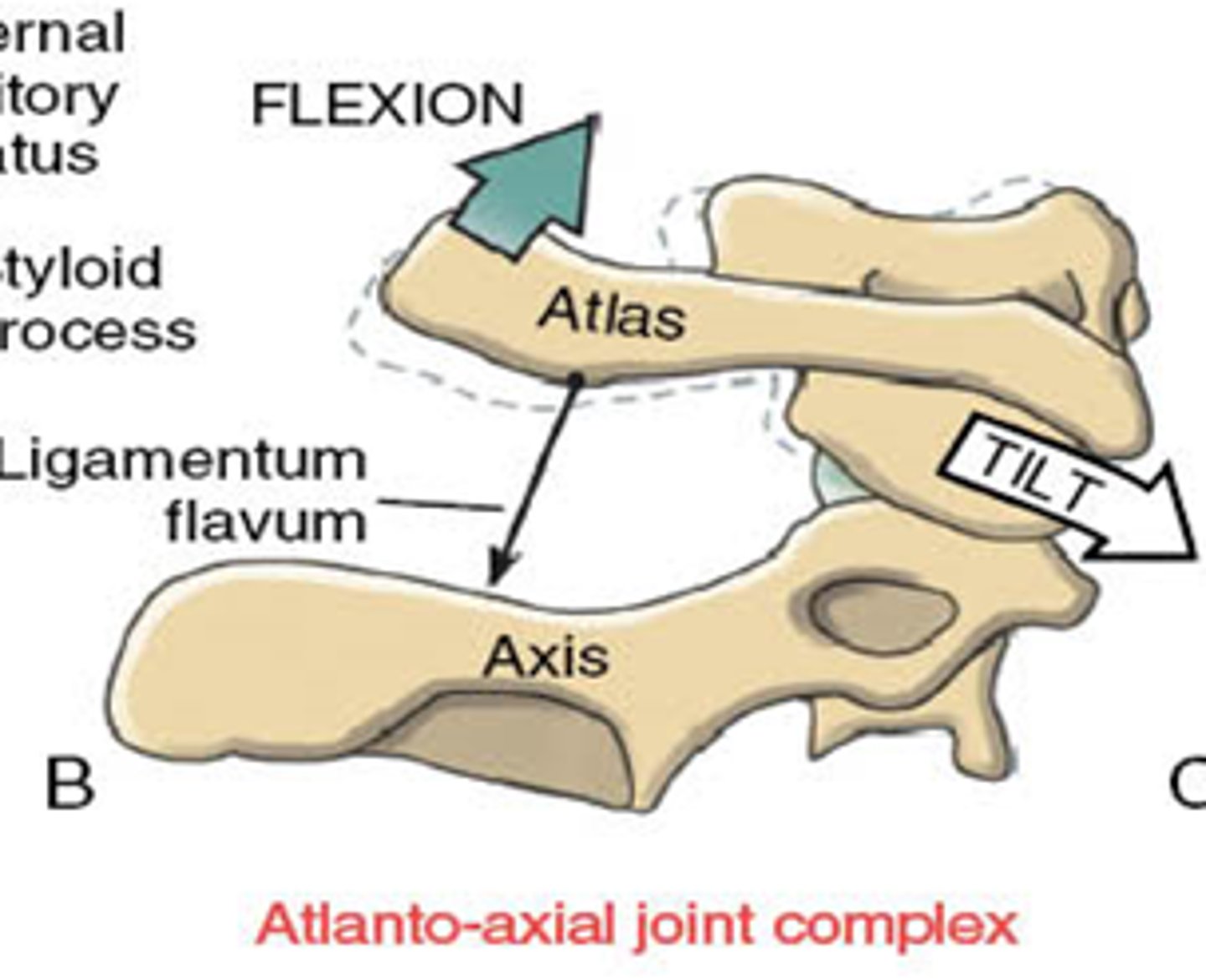
Arthrokinematics (C2-C7): flexion & extension
Extension: inferior facets of cranial vertebrae --> slide inferiorly and posteriorly
Flexion: inferior facets --> slide superiorly and anteriorly
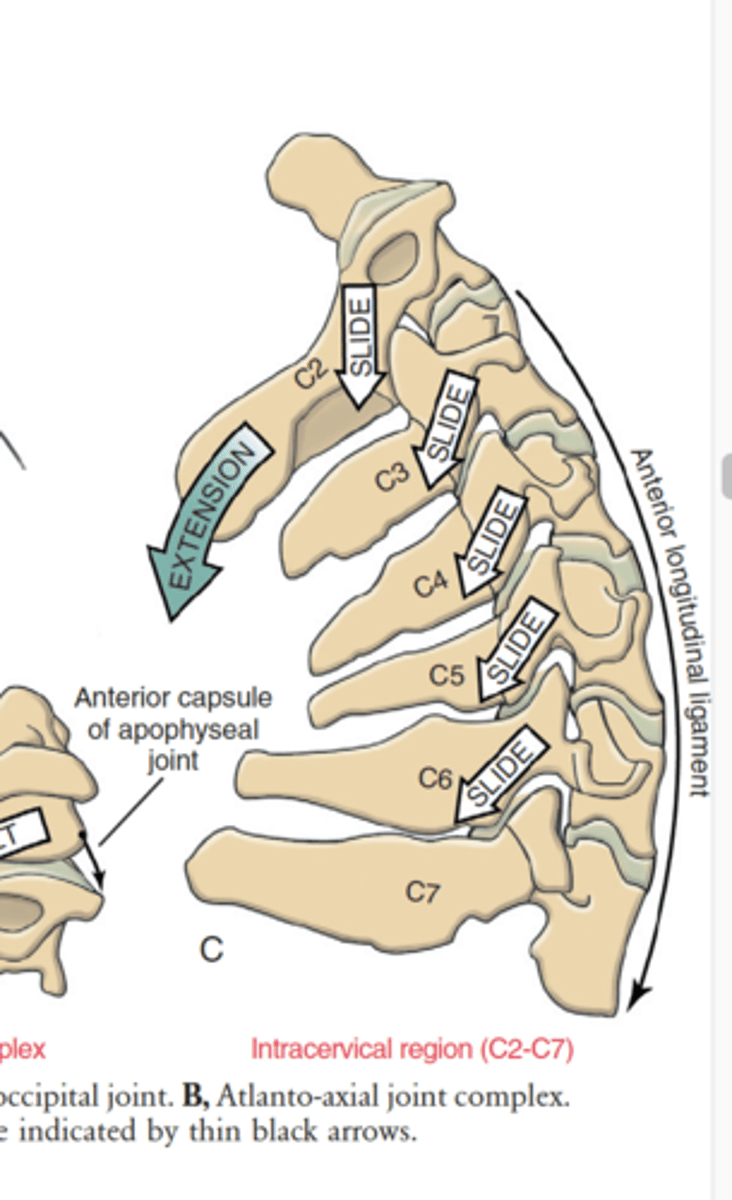
_________: upper cervical extension + lower cervical flexion
Protraction
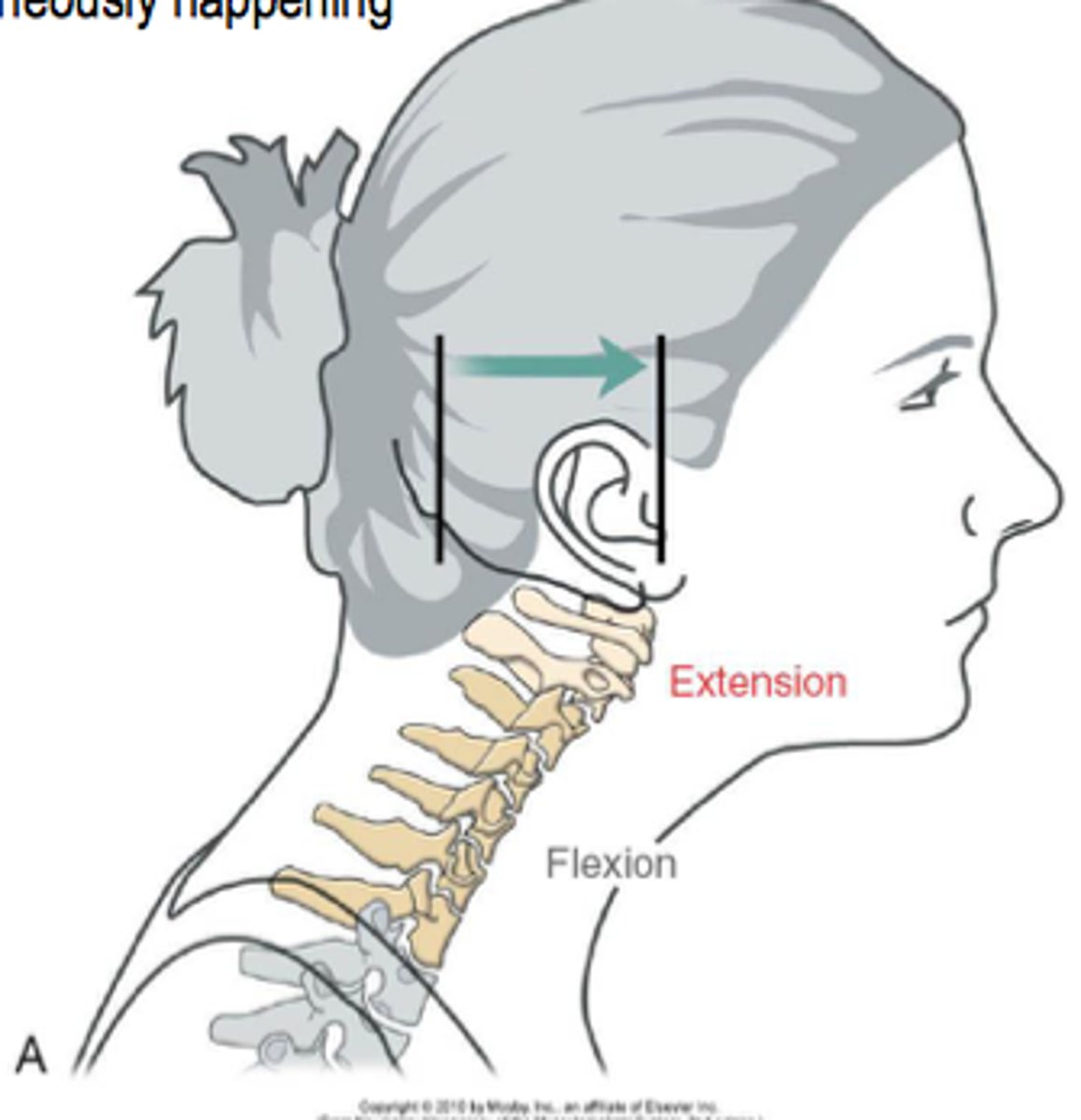
_________: upper cervical flexion + lower cervical extension
Retraction (double chin)
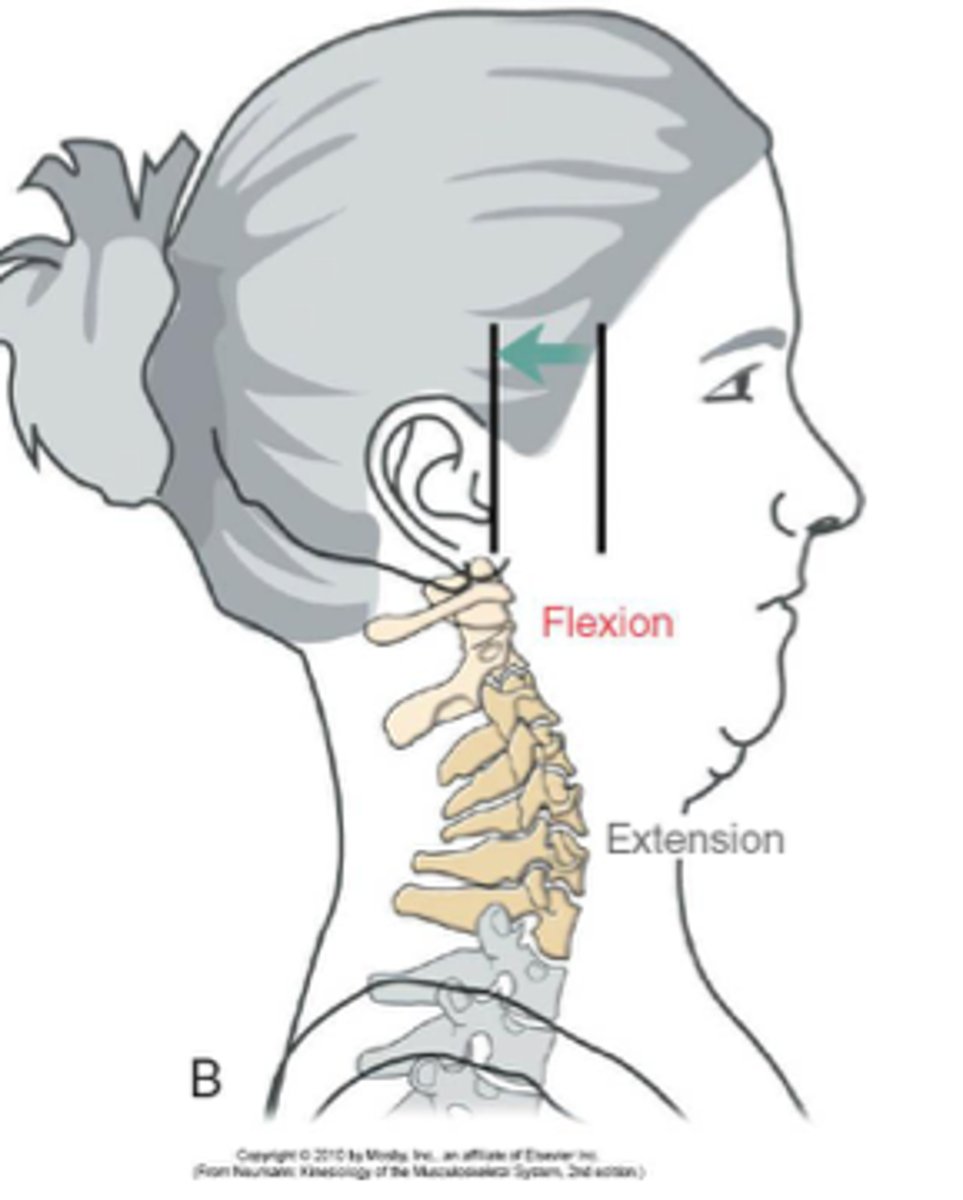
Osteokinematics (neck): rotation
65-75 degrees each side
How much rotation comes from the AA joint?
50-60%
True or false: the AO joint can rotate
FALSE -- it is negligible
Arthrokinematics (AA): rotation
Ring-shaped atlas "twists" about the dens -- flat inferior facets slide on superior facets
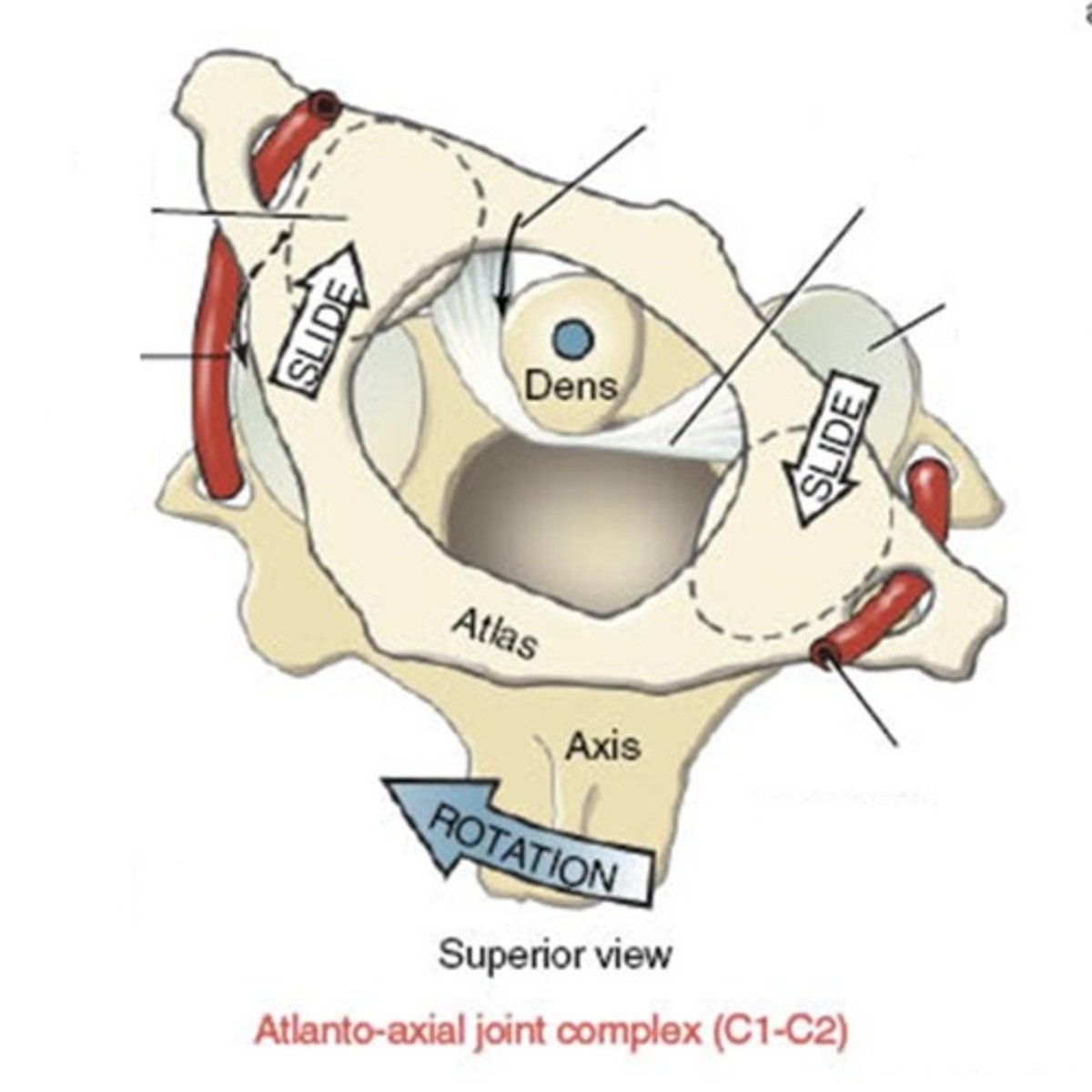
During rotation @ the AA joint, there is a __________ (posterior/anterior) slide on side of rotation & __________ (posterior/anterior) on opposite side
Posterior, anterior
Arthrokinematics (C2-C7): same side as rotation
Inferior facets of cranial vertebrae -- slide posteriorly and slightly inferiorly
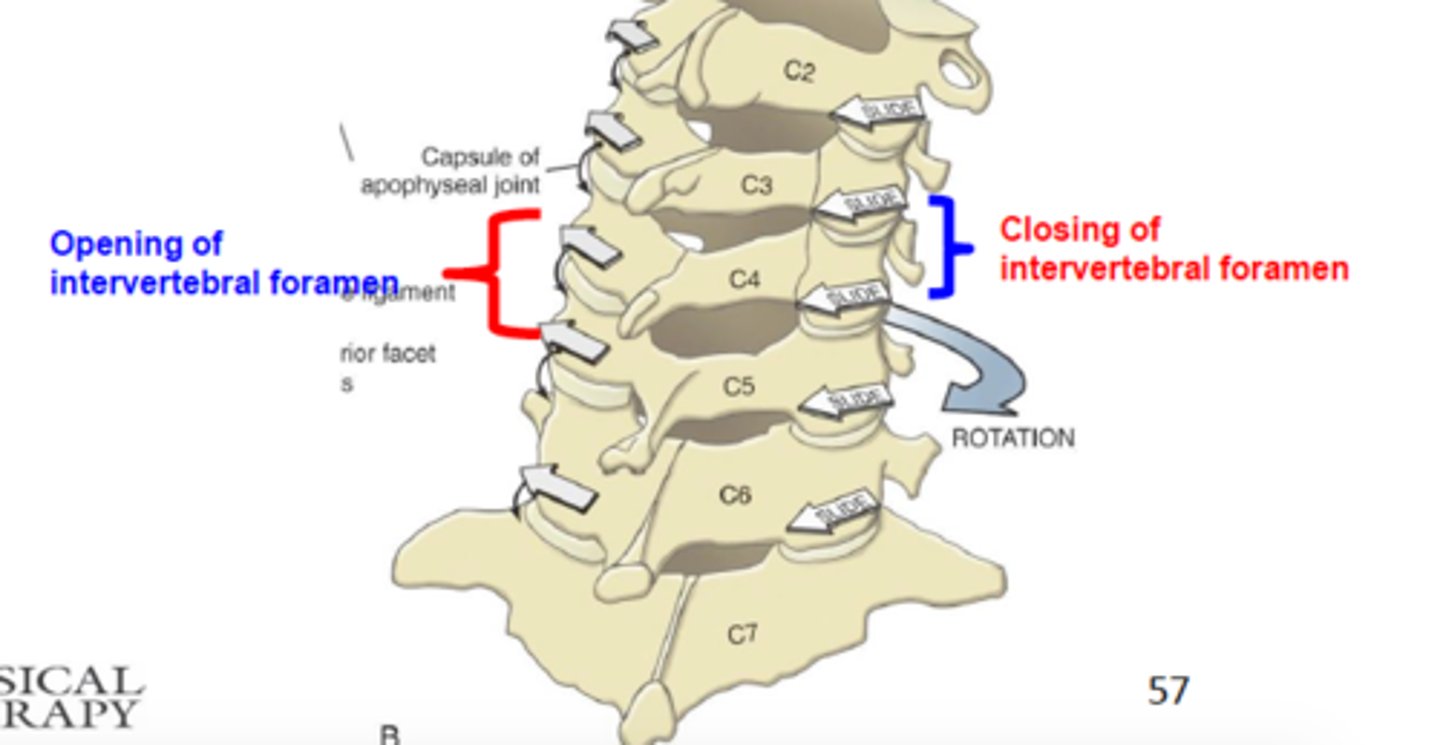
Arthrokinematics (C2-C7): opp side of rotation
Inferior facets of cranial vertebrae -- slide anteriorly and slightly superiorly
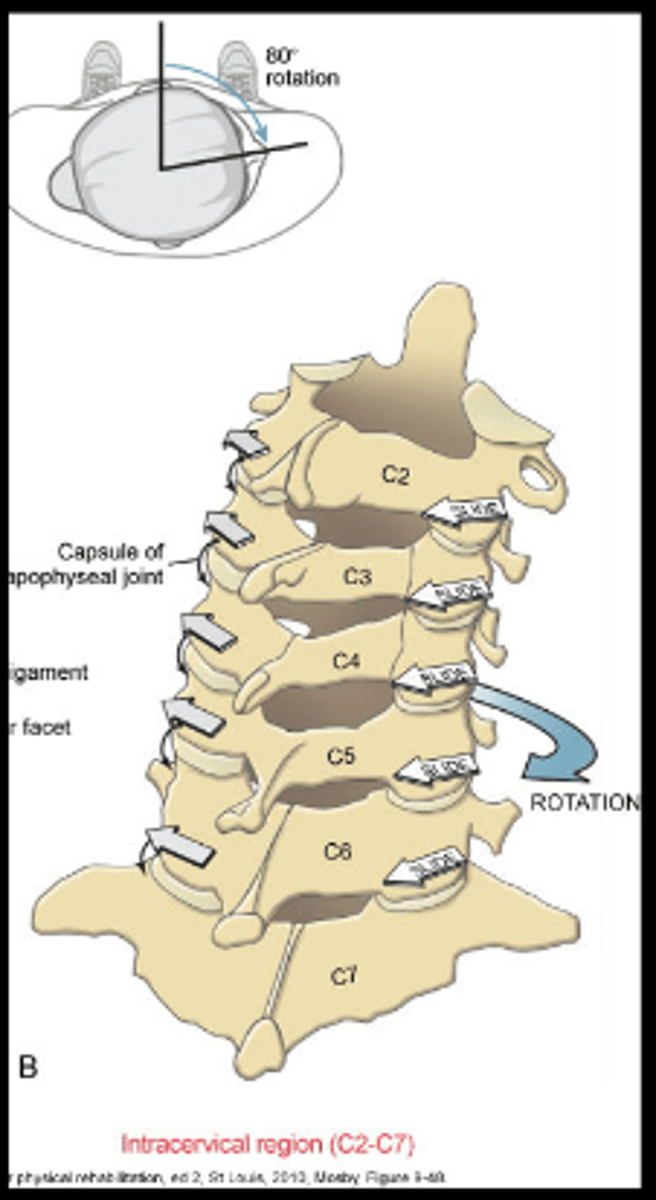
Osteokinematics (neck): lateral flexion
35-40 degrees each direction
Arthrokinematics (AO): lateral flexion
Small amount of rolling w/ opposite slide
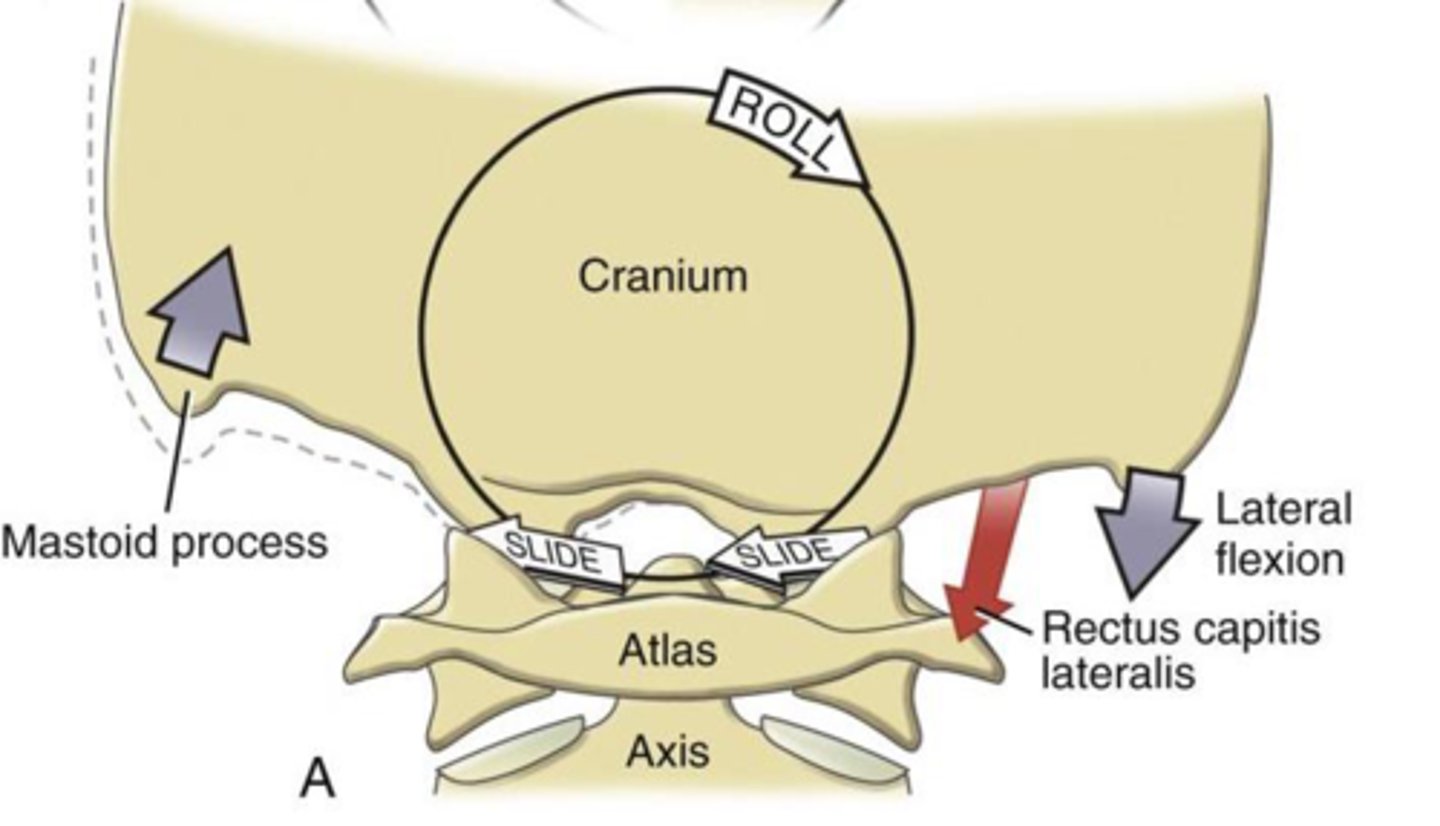
Arthrokinematics (AA): lateral flexion
SIKEEEE - N/A

Arthrokinematics (C2-C7): same side as lateral flexion
Inferior facets of cranial vertebrae -- slide inferiorly and slightly posteriorly
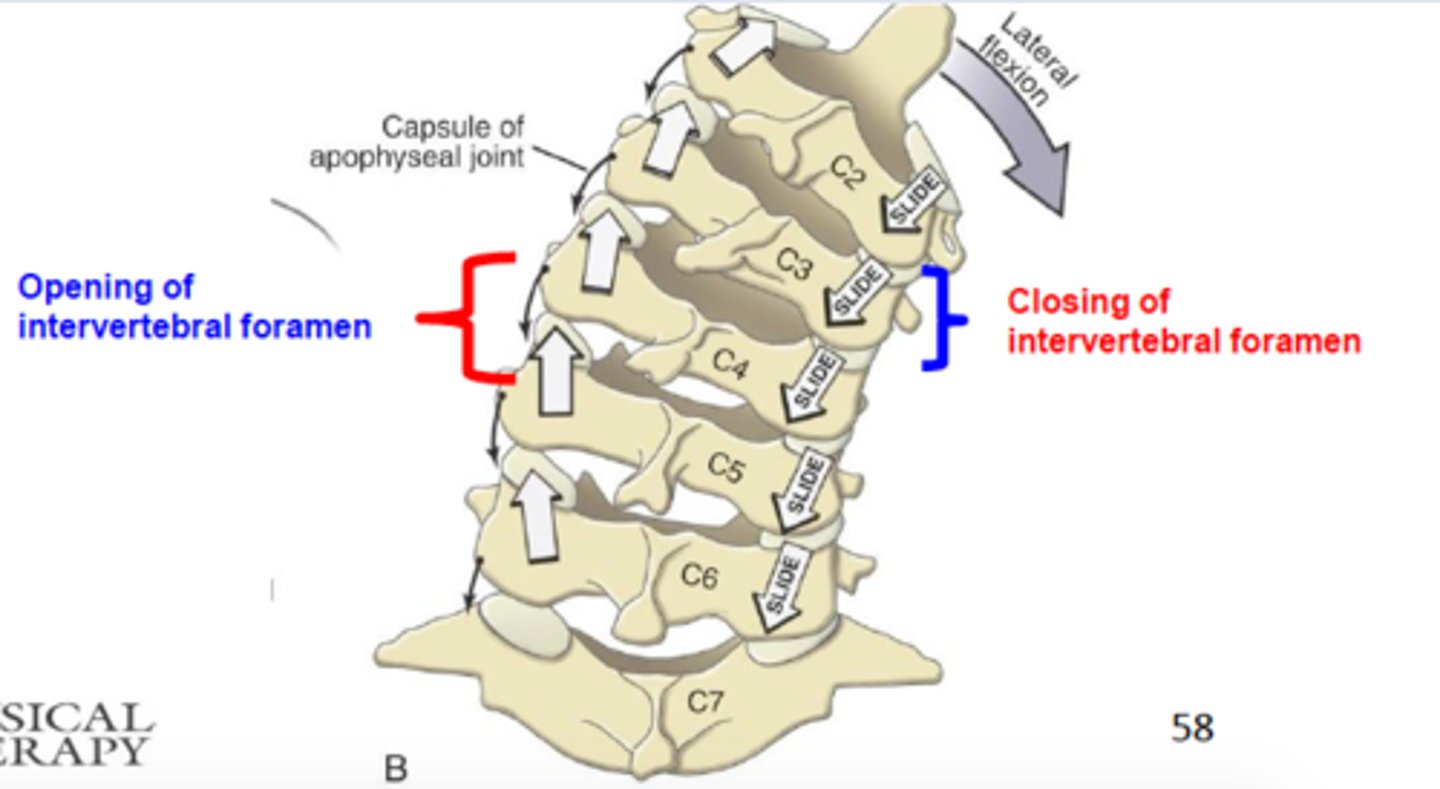
Arthrokinematics (C2-C7): opp side as lateral flexion
Inferior facets of cranial vertebrae -- slide superiorly and slightly anteriorly
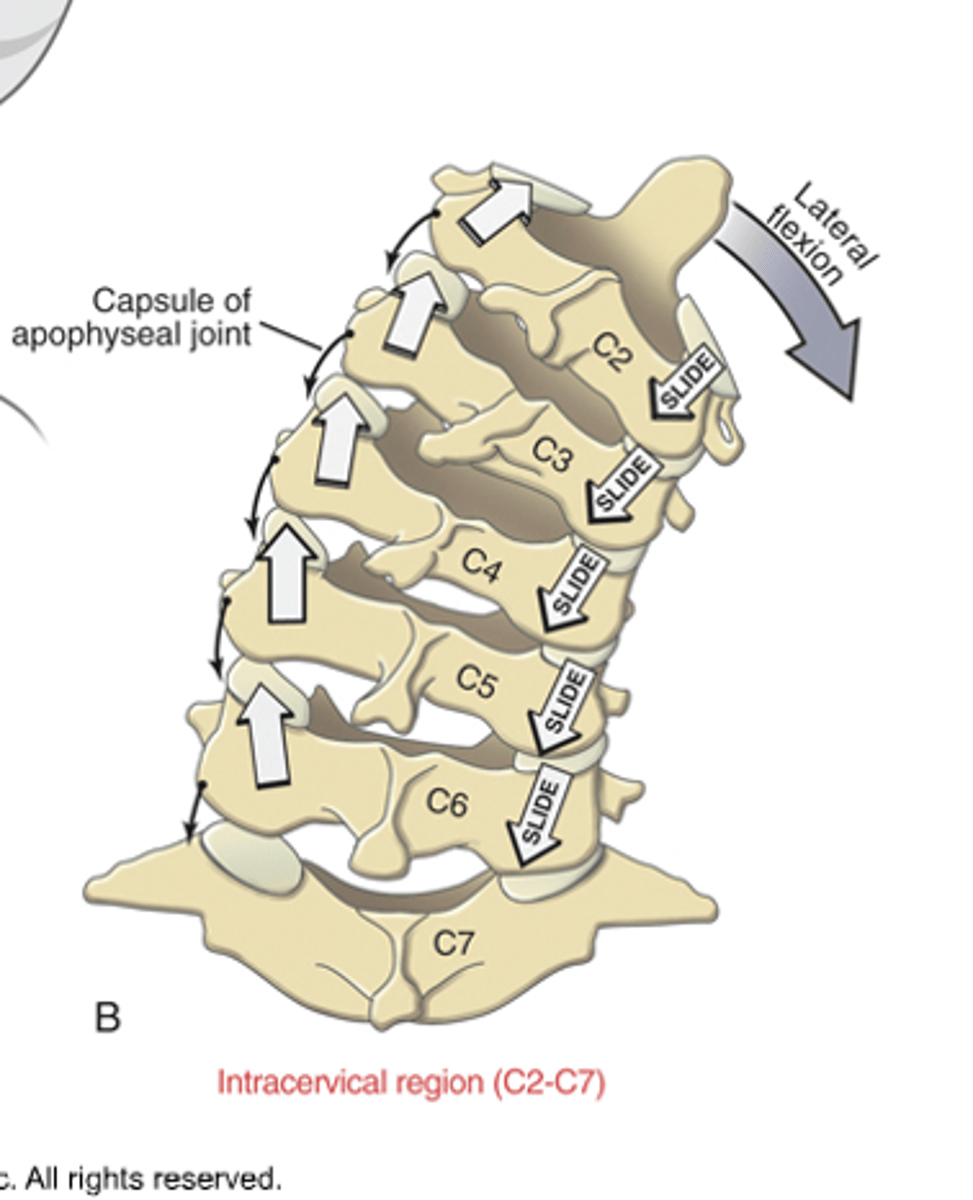
How do the facet joints of the thoracic spine differ from the cervical in terms of orientation?
Generally in frontal plane with forward slope (15-25 from vertical)
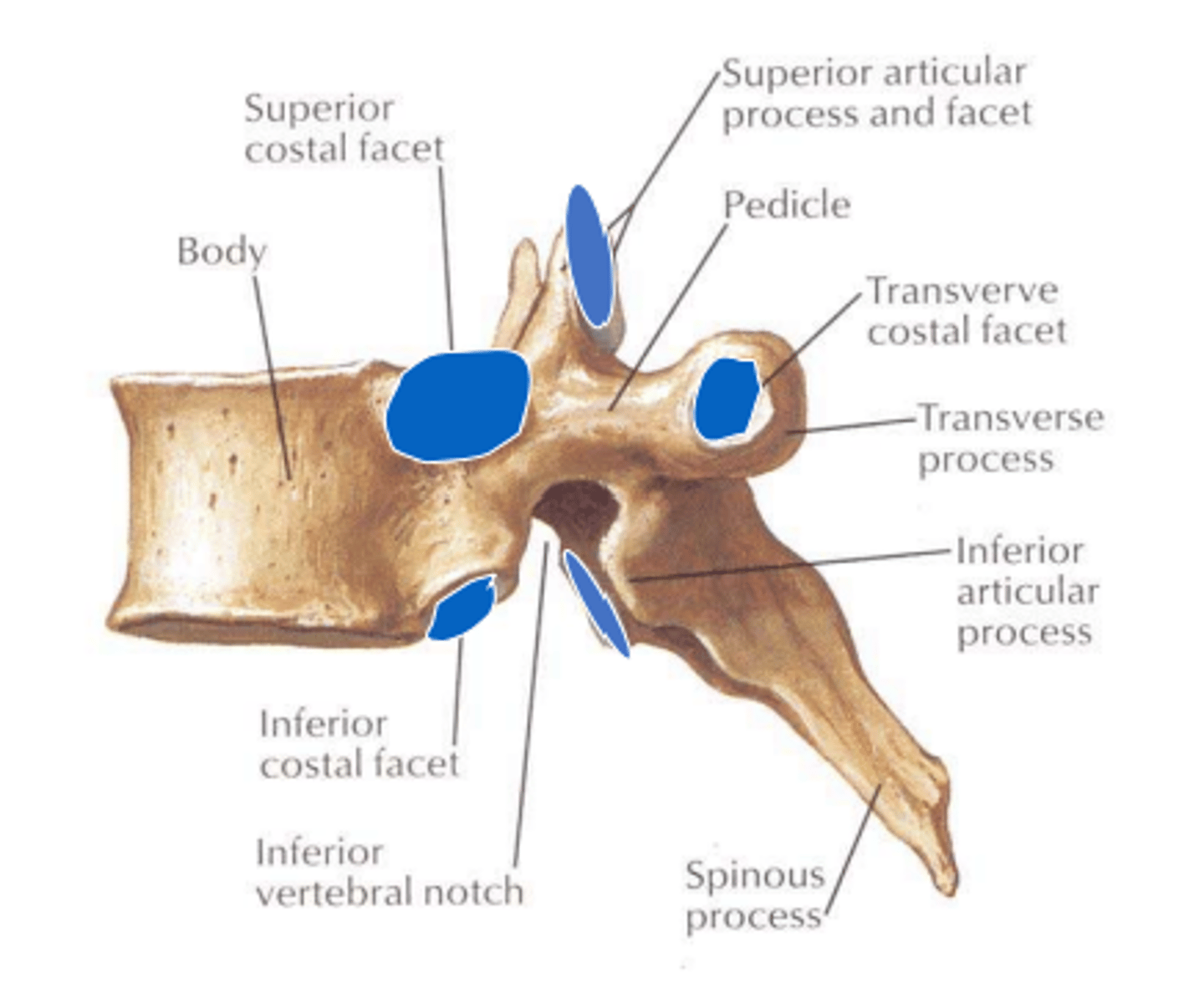
Superior facets (thoracic): face mostly ________
Posterior
Inferior facets (thoracic): face mostly ________
Anterior
___________ joints: head of rib + costal demi-facets on thoracic vertebral bodies
Costocorporeal (costovertebral)
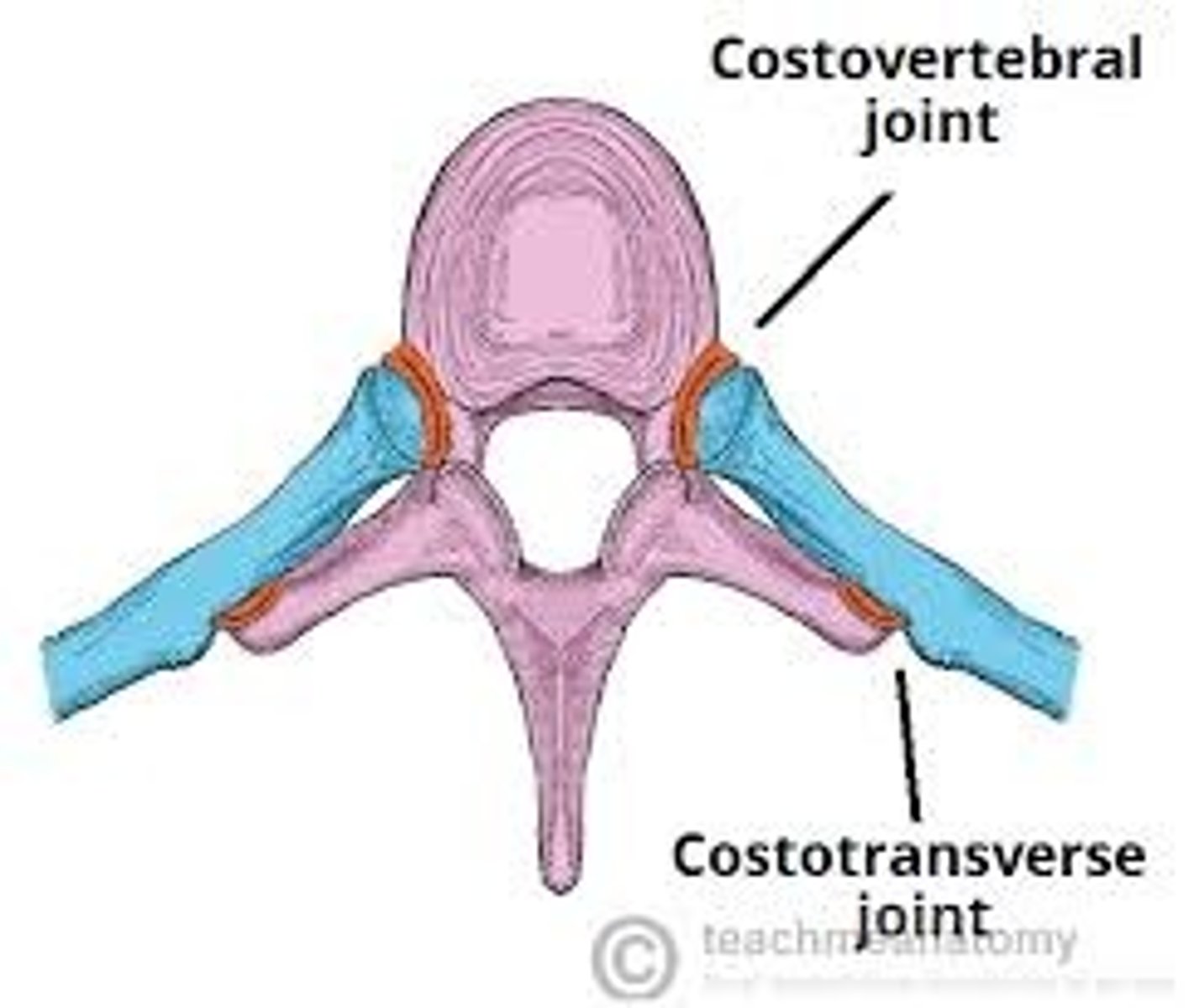
_________ joints: tubercle of rib + costal facet of TP
Costotransverse
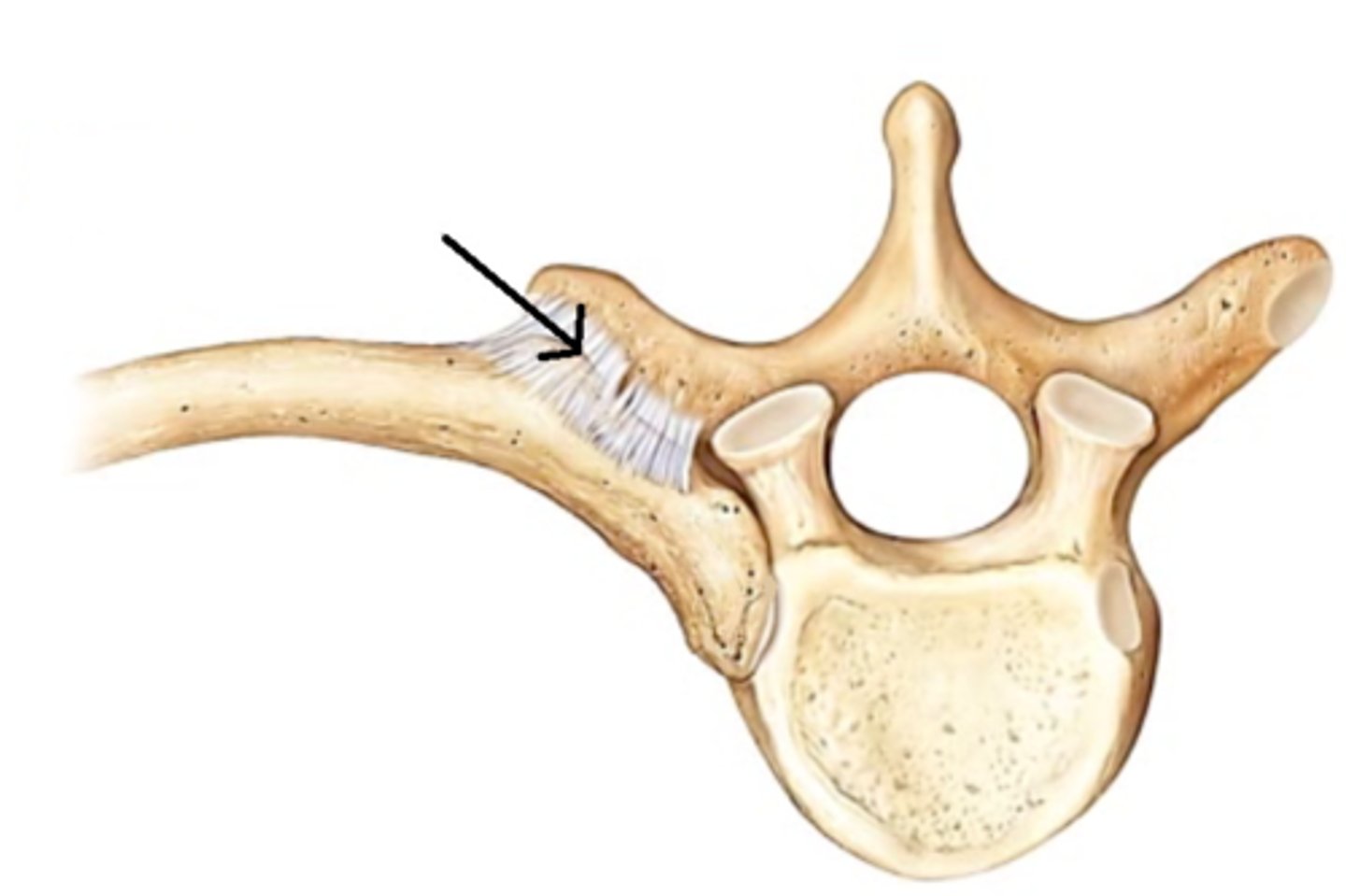
What provides the thoracic spine's mechanical stability?
Rib cage
Osteokinematics (thoracic): flexion & extension
30-40 flexion, 15-20 extension (from neutral kyphosis)
Osteokinematics (thoracic): rotation
25-35
Osteokinematics (thoracic): lateral flexion
25-30
How do the facet joints of the lumbar spine differ from the thoracic & cervical in terms of orientation?
Nearly vertical -- favors sagittal over transverse plane motion
Superior facets (lumbar) face mostly _________
Medial to post-med
